Musculoskeletal
How to submit an article:
- Registered users can submit any published journal article that has a unique DOI (Digital Object Identifier) name or link to Research Hub.
- For example, you can paste the full DOI link:
https://doi.org/10.1109/5.771073or just the DOI name:10.1109/5.771073into the field above and click submit. - The person who is first to submit a valid article to Research Hub will forever be credited for it, and every article submission earns you +6 Research Points.
Sub-Topics:
Related Topics
Published research studies are articles that present the findings of original research that has undergone a peer-review process and has been made publicly available in scholarly journals, books or other media.
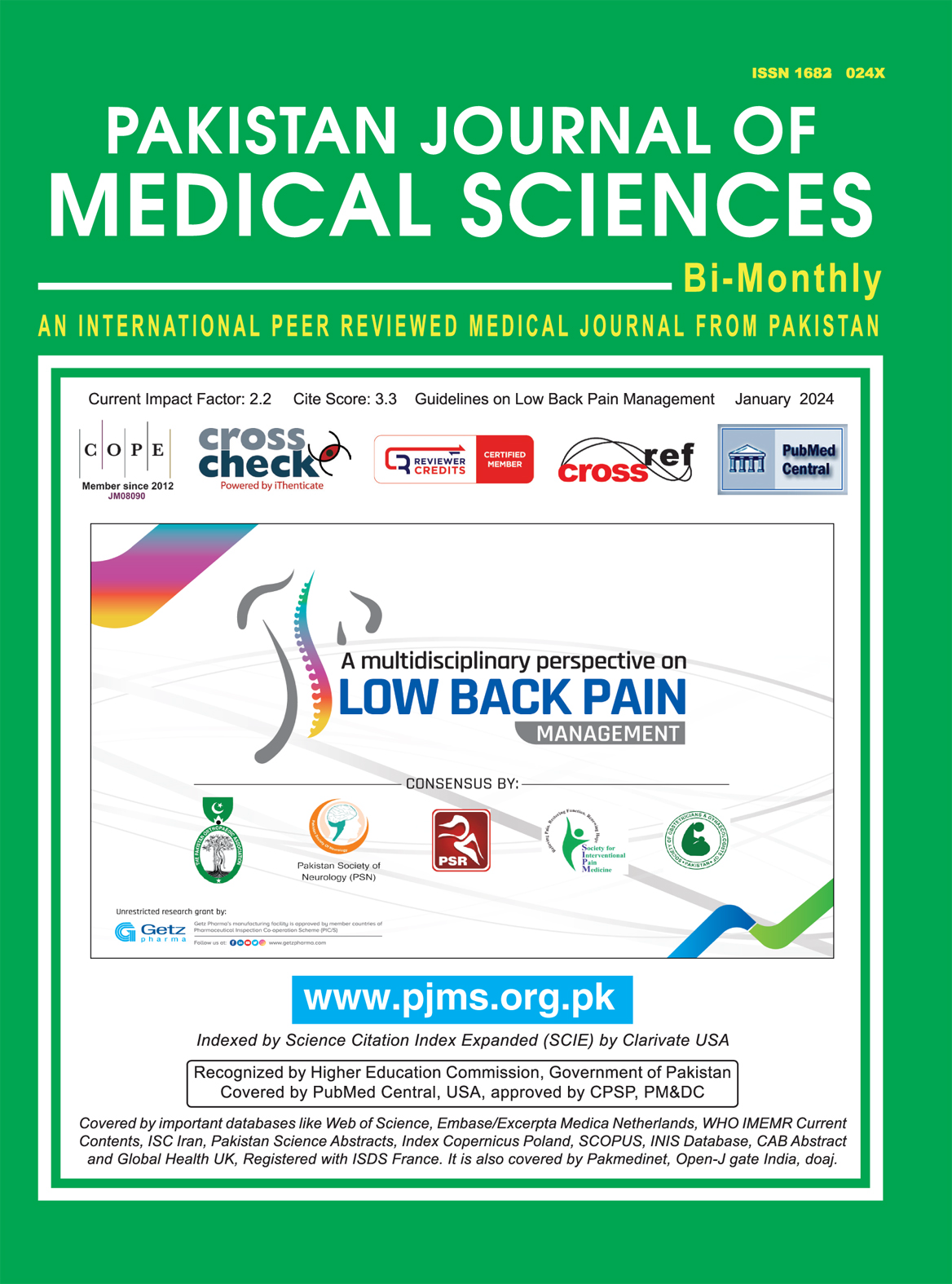
Effect of Self-developed Ye’an Analgetic Decoction/Jiawei Shaoyao Gancao Decoction Combined with Tramadol on TCM Symptom Scores and RLS Severity of patients with Restless Legs Syndrome
2024 Mar 18 Pakistan Journal of Medical Sciences Zhou B, Li W, Li Y, Sun D, Du X
The self-developed Ye’an Analgetic Decoction/Jiawei Shaoyao Gancao Decoction significantly improves clinical symptoms, reduces RLS severity, and enhances quality of life and sleep quality in RLS patients more effectively than basic treatment with tramadol alone.
Randomised Controlled Trial Clinical Study Shao Yao Gan Cao Tang Tramadol Restless Legs Syndrome
Re-evaluation of dietary interventions in rheumatoid arthritis: can we improve patient conversations around food choices?
2024 Feb 20 Rheumatology International Sharma P, Brown S, Sokoya EM
Review Article Diet Rheumatoid ArthritisDespite diet being key in shaping gut microbiota, it surprisingly does not impact the treatment outcomes in individuals with Rheumatoid Arthritis.

Acupuncture Treatment for Restless Legs Syndrome: A Review of Randomized Controlled Trials
2023 Nov 30 Journal of Acupuncture Research Chae GE, Kim HW, Jo HJ, Koh A, Lee YJ, Choi JE, et al.
Acupuncture demonstrates significant improvements in overall health, treatment efficacy rate, sleep quality, and quality of life indicators for patients with RLS, as evidenced by reductions in pain severity (VAS scores), RLS symptoms severity (IRLSRS scores), and absence of significant side effects. Acupuncture is suggested as an effective and safe treatment for RLS, though further large-scale RCT studies are warranted to validate these findings.
Review Article Acupuncture Restless Legs Syndrome
Effects of kidney tonic herbs for primary osteoporosis: A systematic review and meta-analysis
2023 Oct 27 Medicine Li W, Ye B, Huang Z, Zhou H, Feng J, Chen Q, et al.
Systematic Review Meta-Analysis Osteoporosis Kidney-Tonifying Herbs Fracture Risk Bone DensityKidney tonic herbs may enhance bone density and reduce fracture risk in patients with primary osteoporosis.

Intermittent fasting: A promising dietary intervention for autoimmune diseases
2023 Oct Autoimmunity Reviews Barati M, Ghahremani A, Namdar Ahmadabad H
Systematic Review Intermittent Fasting Type 1 Diabetes Autoimmune Diseases Rheumatoid ArthritisIntermittent fasting may potentially influence autoimmune diseases like type 1 diabetes and rheumatoid arthritis, by reducing inflammation and supporting cellular repair mechanisms.
Research insights are moderated by the Research Hub team and offer an at-a-glance overview of interesting research findings.

2024 Rheumatology International
Despite diet being key in shaping gut microbiota, it surprisingly does not impact the treatment outcomes in individuals with Rheumatoid Arthritis.
Review Article Diet Rheumatoid Arthritis
Re-evaluation of dietary interventions in rheumatoid arthritis: can we improve patient conversations around food choices?
Sharma P, Brown S, Sokoya EM

2023 Medicine
Kidney tonic herbs may enhance bone density and reduce fracture risk in patients with primary osteoporosis.
Systematic Review Bone Density Fracture Risk Kidney-Tonifying Herbs Osteoporosis
Effects of kidney tonic herbs for primary osteoporosis: A systematic review and meta-analysis
Li W, Ye B, Huang Z, Zhou H, Feng J, Chen Q, et al.

2023 Autoimmunity Reviews
Intermittent fasting may potentially influence autoimmune diseases like type 1 diabetes and rheumatoid arthritis, by reducing inflammation and supporting cellular repair mechanisms.
Systematic Review Autoimmune Diseases Intermittent Fasting Rheumatoid Arthritis Type 1 Diabetes
Intermittent fasting: A promising dietary intervention for autoimmune diseases
Barati M, Ghahremani A, Namdar Ahmadabad H

2023 PharmaNutrition
Soy protein, bioactive peptides, and isoflavones are generally safe for consumption and may help reduce the risk of several significant health conditions.
Review Article Cholesterol High Blood Pressure Isoflavone Osteoporosis Soybean
Soy protein, bioactive peptides, and isoflavones: A review of their safety and health benefits
Tan ST, Tan SS, Tan CX
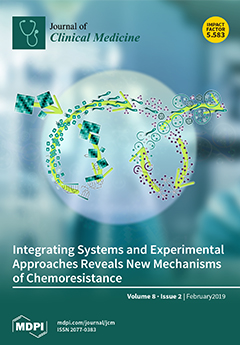
2023 Journal of Clinical Medicine
Rheumatoid arthritis-specific inflammation can be linked directly to the intestinal microbiota, thus, nutritional interventions against gut dysbiosis could function as a causal therapeutic approach.
Clinical Study Inflammation Rheumatoid Arthritis
Intestinal Microbiota Reduction Followed by Fasting Discloses Microbial Triggering of Inflammation in Rheumatoid Arthritis
Häupl T, Sörensen T, Smiljanovic B, Darcy M, Scheder-Bieschin J, Steckhan N, et al.
Review Articles
Review articles summarise and critically evaluate the current state of research on a specific topic or field by synthesising multiple primary research studies.

Re-evaluation of dietary interventions in rheumatoid arthritis: can we improve patient conversations around food choices?
2024 Feb 20 Rheumatology International Sharma P, Brown S, Sokoya EM
Review Article Diet Rheumatoid ArthritisDespite diet being key in shaping gut microbiota, it surprisingly does not impact the treatment outcomes in individuals with Rheumatoid Arthritis.

Acupuncture Treatment for Restless Legs Syndrome: A Review of Randomized Controlled Trials
2023 Nov 30 Journal of Acupuncture Research Chae GE, Kim HW, Jo HJ, Koh A, Lee YJ, Choi JE, et al.
Acupuncture demonstrates significant improvements in overall health, treatment efficacy rate, sleep quality, and quality of life indicators for patients with RLS, as evidenced by reductions in pain severity (VAS scores), RLS symptoms severity (IRLSRS scores), and absence of significant side effects. Acupuncture is suggested as an effective and safe treatment for RLS, though further large-scale RCT studies are warranted to validate these findings.
Review Article Acupuncture Restless Legs Syndrome
Effects of kidney tonic herbs for primary osteoporosis: A systematic review and meta-analysis
2023 Oct 27 Medicine Li W, Ye B, Huang Z, Zhou H, Feng J, Chen Q, et al.
Systematic Review Meta-Analysis Osteoporosis Kidney-Tonifying Herbs Fracture Risk Bone DensityKidney tonic herbs may enhance bone density and reduce fracture risk in patients with primary osteoporosis.

Intermittent fasting: A promising dietary intervention for autoimmune diseases
2023 Oct Autoimmunity Reviews Barati M, Ghahremani A, Namdar Ahmadabad H
Systematic Review Intermittent Fasting Type 1 Diabetes Autoimmune Diseases Rheumatoid ArthritisIntermittent fasting may potentially influence autoimmune diseases like type 1 diabetes and rheumatoid arthritis, by reducing inflammation and supporting cellular repair mechanisms.

Soy protein, bioactive peptides, and isoflavones: A review of their safety and health benefits
2023 Sep PharmaNutrition Tan ST, Tan SS, Tan CX
Review Article Soybean Osteoporosis Isoflavone Cholesterol High Blood PressureSoy protein, bioactive peptides, and isoflavones are generally safe for consumption and may help reduce the risk of several significant health conditions.
Clinical Trials
Clinical trials are research studies that involve people and are conducted to evaluate the safety and efficacy of new treatments or interventions, such as drugs, medical devices, or behavioural therapies.

Effect of Self-developed Ye’an Analgetic Decoction/Jiawei Shaoyao Gancao Decoction Combined with Tramadol on TCM Symptom Scores and RLS Severity of patients with Restless Legs Syndrome
2024 Mar 18 Pakistan Journal of Medical Sciences Zhou B, Li W, Li Y, Sun D, Du X
The self-developed Ye’an Analgetic Decoction/Jiawei Shaoyao Gancao Decoction significantly improves clinical symptoms, reduces RLS severity, and enhances quality of life and sleep quality in RLS patients more effectively than basic treatment with tramadol alone.
Randomised Controlled Trial Clinical Study Shao Yao Gan Cao Tang Tramadol Restless Legs Syndrome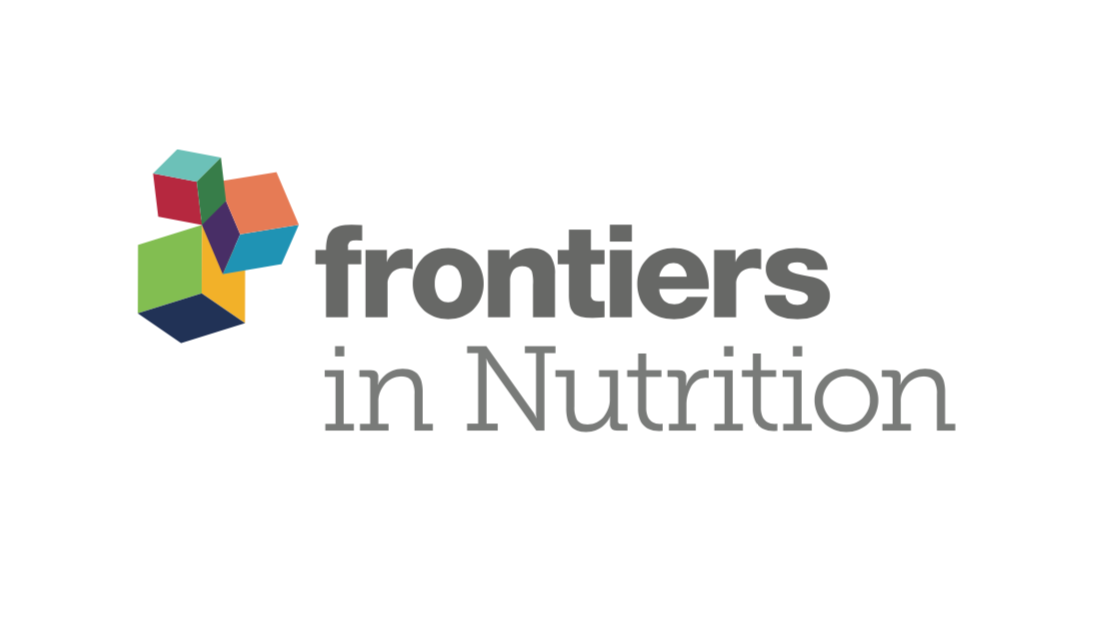
To eat or not to eat—an exploratory randomized controlled trial on fasting and plant-based diet in rheumatoid arthritis (NutriFast-Study)
2022 Nov 02 Frontiers in Nutrition Hartmann AM, Dell'Oro M, Spoo M, Fischer JM, Steckhan N, Jeitler M, et al.
Randomised Controlled Trial Plant-Based Diet Cardiovascular Risk Rheumatoid ArthritisFasting followed by a plant-based diet and a standard diet both positively affected rheumatoid arthritis disease activity and cardiovascular risk factors, without discernible differences.
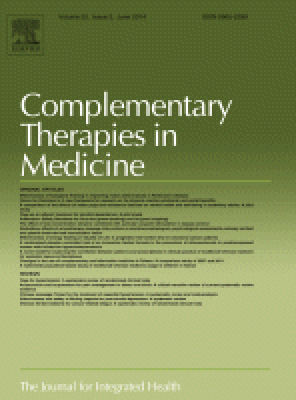
Effects of Auriculotherapy on treatment of women with premenstrual syndrome symptoms: A randomized, placebo-controlled clinical trial
2022 Jun Complementary Therapies in Medicine Korelo RIG, Moreira NB, Miguel BAC, Cruz CG, Souza NSP, Macedo RMB, et al.
Ninety-one women were randomly assigned to Auriculotherapy (AG), Placebo (PG), and Control (CG) groups. The intervention, conducted over 8 weeks, involved microneedles placed in auricular points related to PMS symptoms (AG) or unrelated points (PG). Both AG and PG groups exhibited significantly lower scores in PMS symptoms, musculoskeletal pain, and anxiety compared to the control group. Quality of life improvement was observed in PG. The study concludes that auriculotherapy can serve as an adjunctive therapy to alleviate both physical and mood symptoms associated with PMS.
Randomised Controlled Trial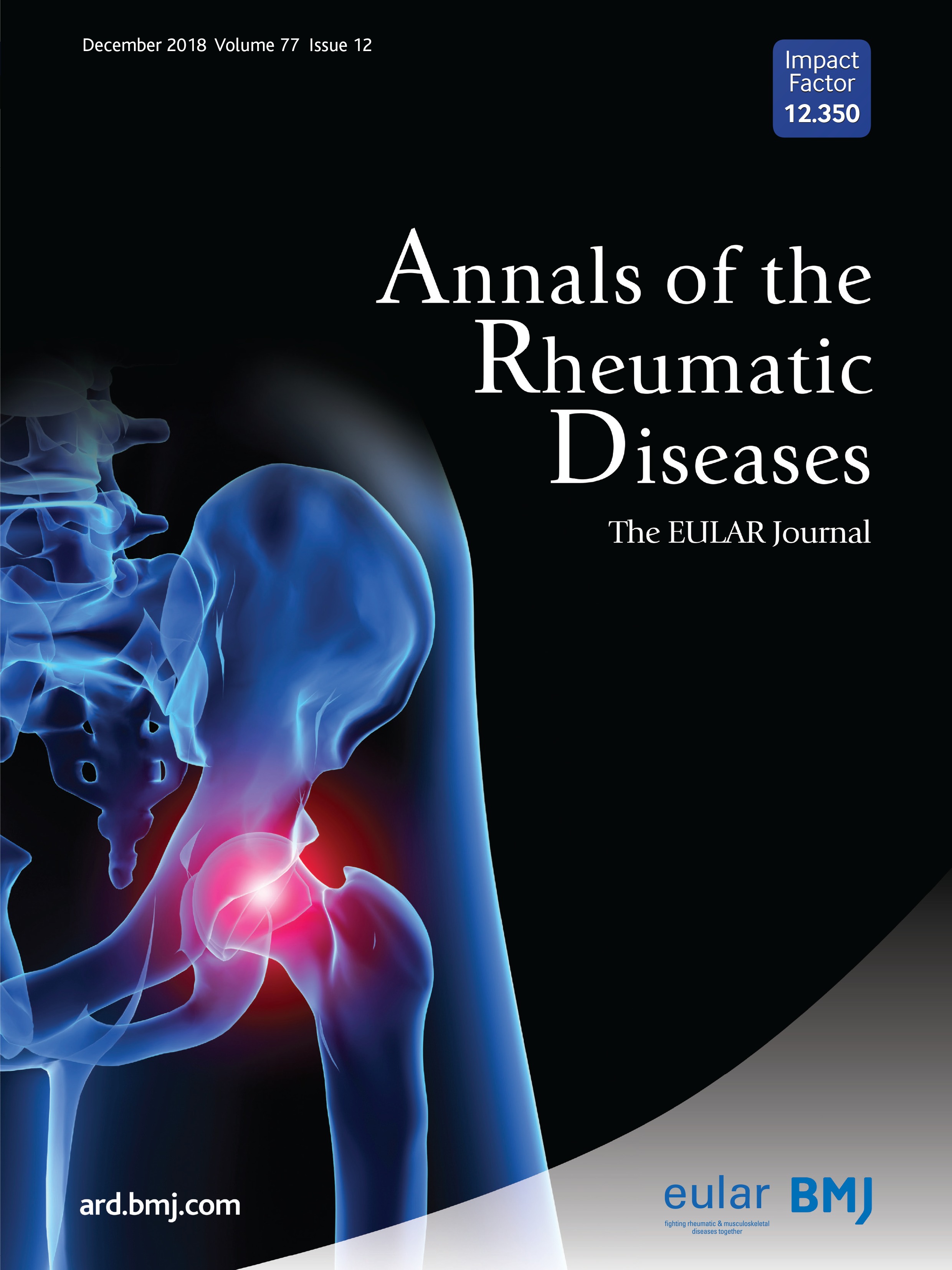
POS0583 RHEUMATOID ARTHRITIS BENEFITS FROM FASTING AND PLANT-BASED DIET: AN EXPLORATORY RANDOMIZED CONTROLLED TRIAL (NUTRIFAST)
2022 May 23 Annals of the Rheumatic Diseases Hartmann AM, Kandil FI, Steckhan N, Häupl T, Kessler CS, Michalsen A, et al.
Randomised Controlled Trial Plant-Based Diet Intermittent Fasting Rheumatoid ArthritisFasting followed by a plant-based diet positively impacts disease activity and cardiovascular risk factors in rheumatoid arthritis patients.
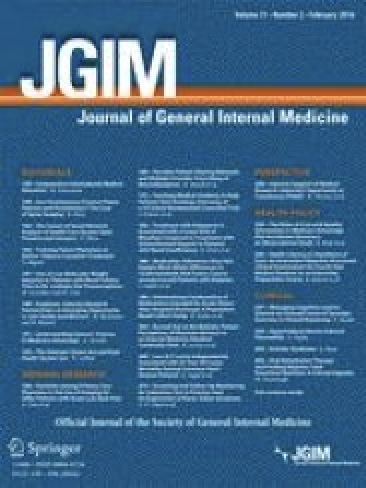
Individual vs. Group Delivery of Acupuncture Therapy for Chronic Musculoskeletal Pain in Urban Primary Care—a Randomized Trial
2020 Feb 19 Journal of General Internal Medicine McKee MD, Nielsen A, Anderson B, Chuang E, Connolly M, Gao Q, et al.
Randomised Controlled Trial Group AcupunctureBoth individual and group acupuncture therapy delivered in primary care settings reduced chronic pain and improved physical function at 12 weeks.
Study Protocols
Published study protocols are detailed plans that outline the objectives, methodology, statistical analyses, and organisation of a research study that have been made publicly available for others to review and use as a reference.

Chinese herbal medicine Xianling Gubao capsule for knee osteoarthritis
2022 Jan 21 Medicine Liu W, Xu D, Qi Q, Li J, Ou L
A high-quality evidence of XLGBC for the treatment of KOA will be generated from the aspects of safety and efficacy. This systematic review will provide evidence to help us confirm the clinical efficacy of XLGBC in the treatment of KOA.
Study Protocol Knee Osteoarthritis Xian Ling Gu Bao Formula
Warm acupuncture therapy for Primary sciatica
2021 Feb 26 Medicine Cao F, He XW, Guo C, Wang JW, Zeng RL, Lu LB, et al.
This study will provide evidence to judge whether warm acupuncture.
Study Protocol Sciatica Warm Needling
The effectiveness of acupuncture and moxibustion for treating tenosynovitis
2020 Dec 04 Medicine Huang S, Fan Q, Xiong J, Liao K, Hua F, Xiang J, et al.
Evidence showed that acupuncture is valid for treating De Quervain's tenosynovitis. It also showed that it improves the local blood circulation of the lesion by promoting the repair of muscles, tendons and other soft tissues.
Study Protocol Neck, Shoulder, Arm & Wrist Pain
Acupuncture for lateral epicondylitis: A prisma-compliant protocol for a systematic review and meta-analysis of randomized controlled trials
2020 Sep 11 Medicine Kim, Ha-Na KMDa; Goo, Bonhyuk KMD, PhDb, ∗; Nam, Sang-Soo KMD, et al.
Acupuncture treatments are effective in releasing neurotransmitters to relief tendinopathy. In this study, it is reported to have increase blood flow and collagen proliferation to help regenerate the tendon. Since lateral epicondylitis is a degenerative condition from repetitive damage rather than an inflammatory condition. The effect of acupuncture on recovery from the damaged tendon provides long term alternative and overall improved quality of life for elbow pain patients.
Study Protocol Neck, Shoulder, Arm & Wrist PainPresentation Slides

Review Article
Despite diet being key in shaping gut microbiota, it surprisingly does not impact the treatment outcomes in individuals with Rheumatoid Arthritis.
Sharma P, Brown S, Sokoya EM

Systematic Review
Kidney tonic herbs may enhance bone density and reduce fracture risk in patients with primary osteoporosis.
Li W, Ye B, Huang Z, Zhou H, Feng J, Chen Q, Huang H, Meng S, Qie F, Shi X.

Systematic Review
Intermittent fasting may potentially influence autoimmune diseases like type 1 diabetes and rheumatoid arthritis, by reducing inflammation and supporting cellular repair mechanisms.
Barati M, Ghahremani A, Namdar Ahmadabad H

Review Article
Soy protein, bioactive peptides, and isoflavones are generally safe for consumption and may help reduce the risk of several significant health conditions.
Tan ST, Tan SS, Tan CX

Clinical Study
Rheumatoid arthritis-specific inflammation can be linked directly to the intestinal microbiota, thus, nutritional interventions against gut dysbiosis could function as a causal therapeutic approach.
Häupl T, Sörensen T, Smiljanovic B, Darcy M, Scheder-Bieschin J, Steckhan N, Hartmann AM, Koppold DA, Stuhlmüller B, Skriner K, Walewska BM, Hoppe B, Bonin M, Burmester GR, Schendel P, Feist E, Liere K, Meixner M, Kessler C, Grützkau A, Michalsen A

Systematic Review
Tuina therapy for chronic low back pain indicates potential pain relief and reduced disability but doesn't improve quality of life
Yang J, Zhou X, Ma Q, Woods JT, Mohabbat AB, Do A, Brault JS, Jensen MA, Shin KM, Shen L, Zhao C, Cheong KCP, He K, Guo Y, Chen Z, Tang S, Tang Y, Tan CIC, Chen J, Bauer BA

Systematic Review
Tuina massage for chronic low back pain reveals promising results amid methodological considerations
Yang J, Zhou X, Ma Q, Woods JT, Mohabbat AB, Do A, Brault JS, Jensen MA, Shin KM, Shen L, Zhao C, Cheong KCP, He K, Guo Y, Chen Z, Tang S, Tang Y, Tan CIC, Chen J, Bauer BA
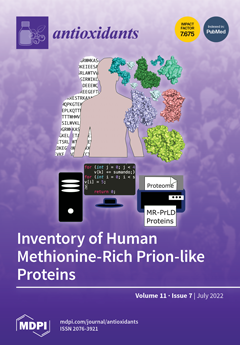
Clinical Study
Preclinical studies related to osteoporosis have reported favorable effects of honey on cortical and trabecular bone microstructure, bone strength, and oxidative stress.
Martiniakova M, Kovacova V, Mondockova V, Zemanova N, Babikova M, Biro R, Ciernikova S, Omelka R

Clinical Study
Clinical studies related to breast cancer have revealed that honey is effective in increasing blood cell counts, interleukin-3 levels, and quality of life.
Martiniakova M, Kovacova V, Mondockova V, Zemanova N, Babikova M, Biro R, Ciernikova S, Omelka R
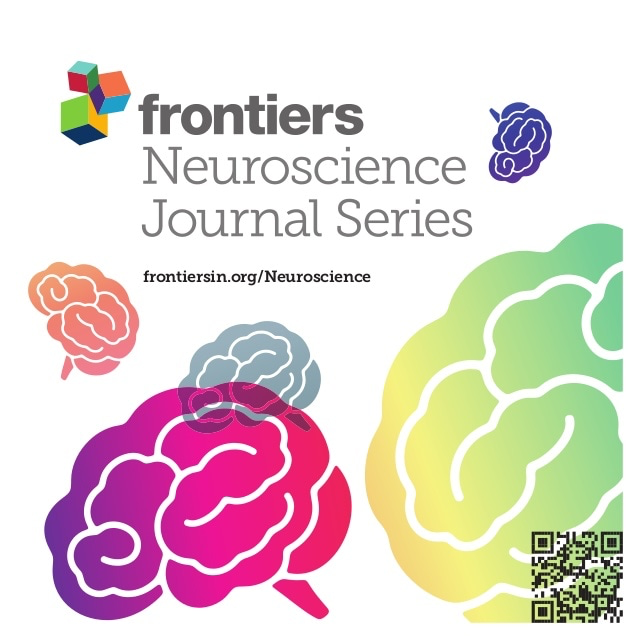
Systematic Review
Acupuncture's effectiveness for carpal tunnel syndrome uncovers better pain relief compared to night splints and potential benefits when used alongside other treatments
Dong Q, Li X, Yuan P, Chen G, Li J, Deng J, Wu F, Yang Y, Fu H, Jin R
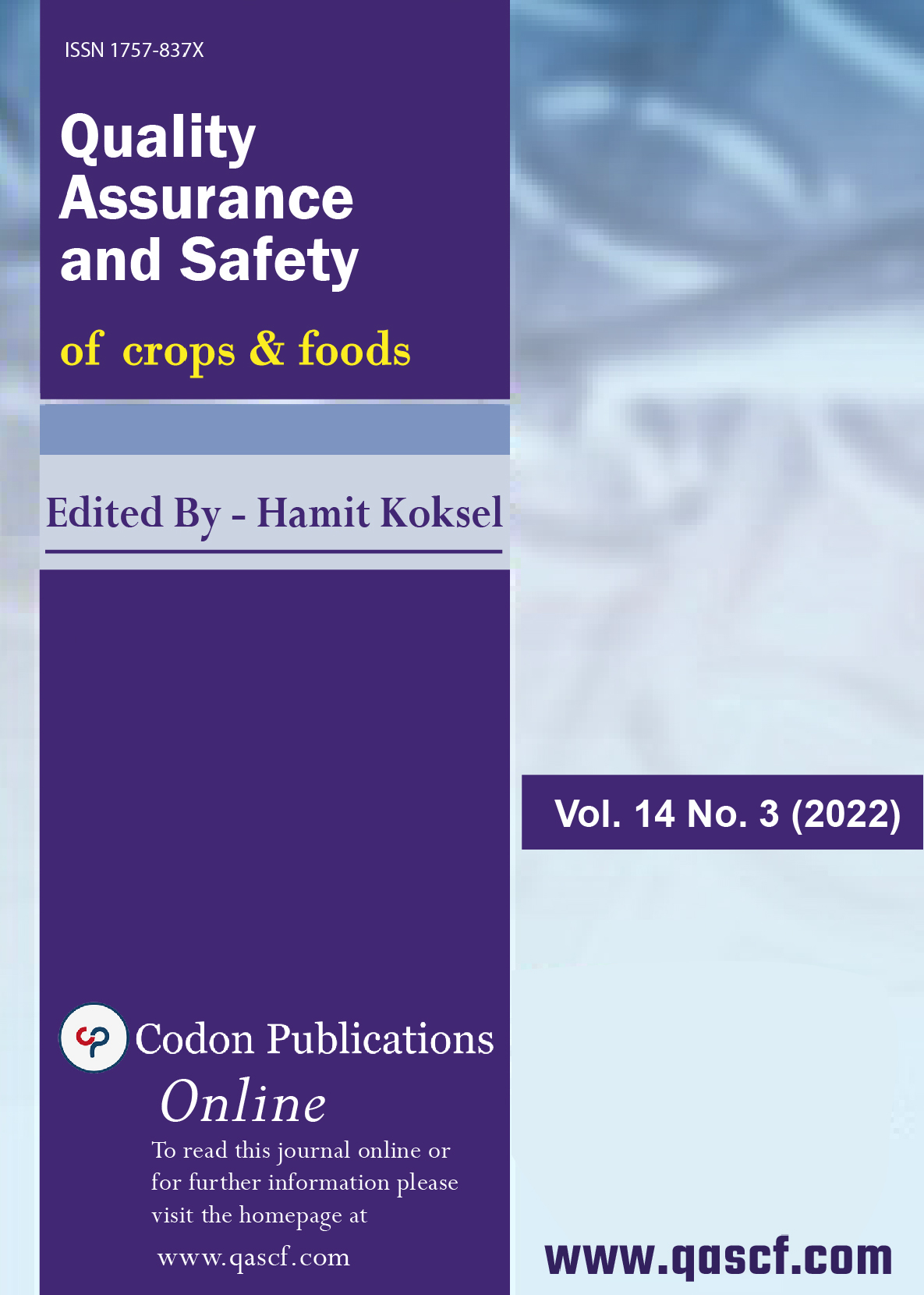
Meta-Analysis
The traditional Chinese herbal medicine Shaoyao Gancao Tang (SG-Tang) may be an effective and safe alternative treatment to relieve Restless Leg Syndrome.
Tian Z, Li R, Wei J, Huai W, Xia J, Jiang H, Xiong Y, Chen Y

Clinical Study
Moderate beer intake does not show a protective effect against bone loss in early post-menopausal women.
Trius-Soler M, Tresserra-Rimbau A, Moreno JJ, Peris P, Estruch R, Lamuela-Raventós RM

Randomised Controlled Trial
Fasting followed by a plant-based diet and a standard diet both positively affected rheumatoid arthritis disease activity and cardiovascular risk factors, without discernible differences.
Hartmann AM, Dell'Oro M, Spoo M, Fischer JM, Steckhan N, Jeitler M, Häupl T, Kandil FI, Michalsen A, Koppold-Liebscher DA, Kessler CS

Systematic Review
Guizhi Shaoyao Zhimu Decoction was more effective and had fewer adverse reactions compared to the control group in the treatment of gout and the combined use of modified GSZD with other treatments showed decreased levels of C-reactive protein and erythrocyte sedimentation rate.
Liu H, Chi X, Zhang H, Shi H, Pan J, Wang Y, Xue X, Lu Y, Song X, Ma K

Systematic Review
Electroacupuncture treatment for carpal tunnel syndrome was reported to be effective and showed a significant difference from the control group.
Park CW, Lim MJ, Lee SW, Yi YH, Song DW, Yu SG, Kim MJ, Oh DY, Choi HJ, Ju AR
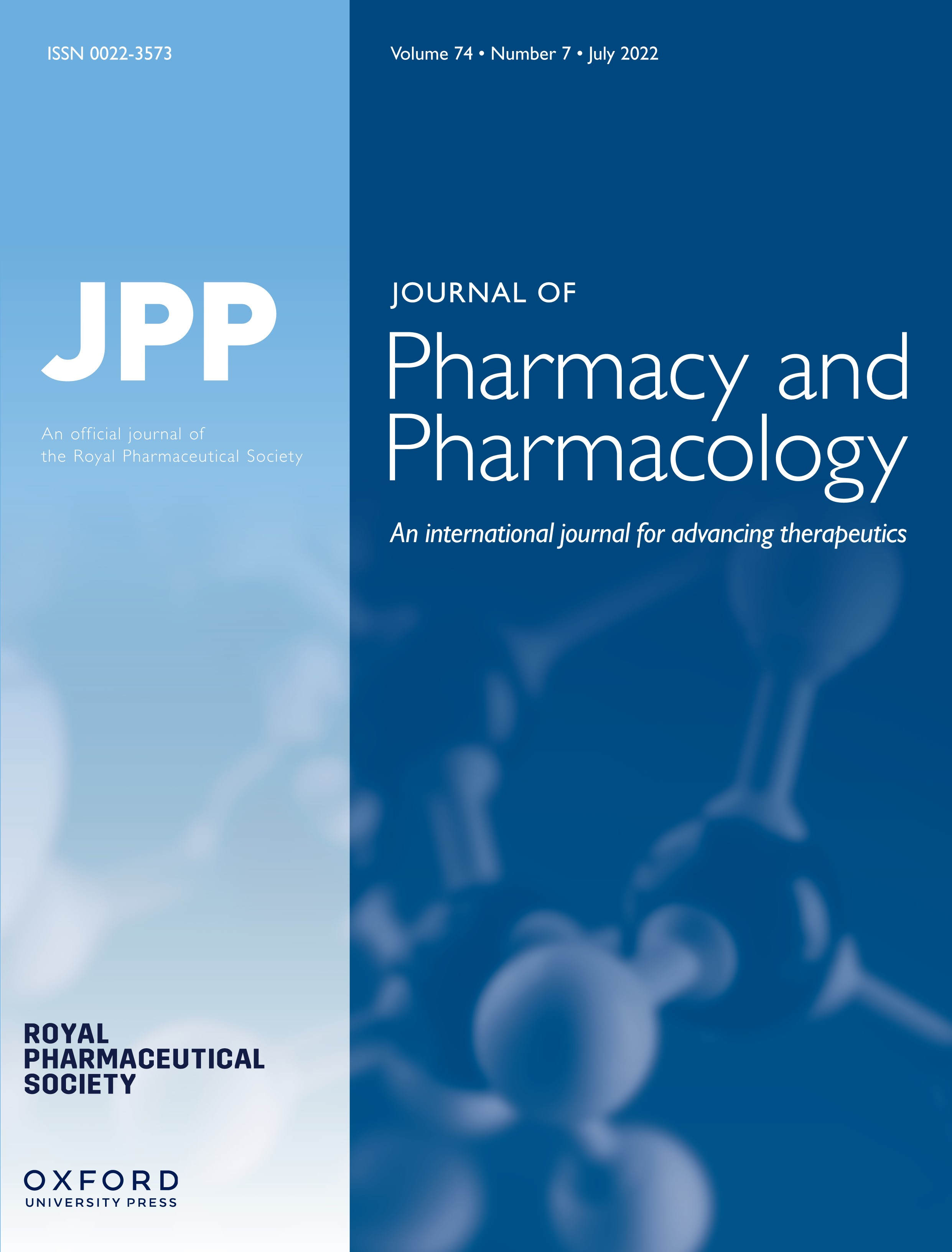
Traditional Chinese medicine exhibits fewer side effects while effectively controlling inflammation and serum uric acid in gout patients.
Liu ZQ, Sun X, Liu ZB, Zhang T, Zhang LL, Wu CJ
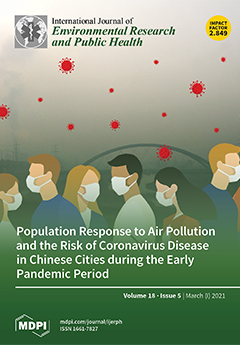
Systematic Review
Dietary strategies, such as caloric restriction and ketogenic diets, can alleviate chronic pain and enhance quality of life.
Cuevas-Cervera M, Perez-Montilla J, Gonzalez-Muñoz A, Garcia-Rios M, Navarro-Ledesma S

Randomised Controlled Trial
Fasting followed by a plant-based diet positively impacts disease activity and cardiovascular risk factors in rheumatoid arthritis patients.
Hartmann AM, Kandil FI, Steckhan N, Häupl T, Kessler CS, Michalsen A, Koppold-Liebscher DA

Systematic Review
Higher consumption of coffee and specifically decaffeinated coffee raises the risk of rheumatoid arthritis, while caffeinated coffee, tea and caffeine intake doesn't.
Asoudeh F, Dashti F, Jayedi A, Hemmati A, Fadel A, Mohammadi H
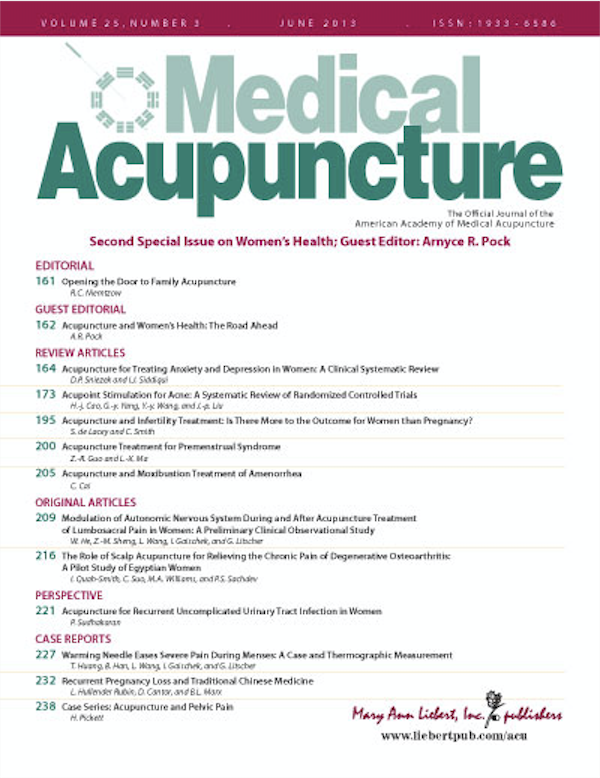
Systematic Review
Acupuncture may be effective and safe for short-term pain reduction and functional improvement in hand-and-wrist conditions.
Trinh K, Zhou F, Belski N, Deng J, Wong CY
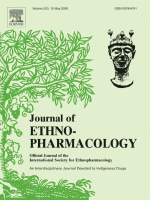
Systematic Review
Adding Du Huo Ji Sheng Decoction on bisphosphonate medications seems to be an effective and safe strategy in treating patients with osteoporosis.
Huang CY, Cheng CJ, Chiou WF, Chang WC, Kang YN, Lee MH

Review Article
Coconut water possesses unique compound profiles that imbue it with a broad spectrum of medical properties, incorporating aspects of nutrition, pharmacology, and disease prevention.
Rethinam P, Krishnakumar V
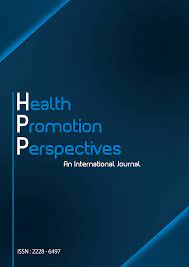
Systematic Review
Pomegranate has been confirmed to improve clinical features and reduce inflammatory, oxidative stress, and apoptosis markers in osteoarthritis.
Malek Mahdavi A, Javadivala Z

Review Article
The ketogenic diet, by reducing carbohydrate intake, shows potential in weight loss, insulin requirement reduction, and mitigation of inflammatory symptoms in patients with inflammatory arthritis.
Ciaffi J, Mitselman D, Mancarella L, Brusi V, Lisi L, Ruscitti P, Cipriani P, Meliconi R, Giacomelli R, Borghi C, Ursini F

Systematic Review
Acupuncture displays potential as a safe and effective treatment for foot and ankle pain, providing pain relief and functional improvement.
Trinh K, Belski N, Zhou F, Kuhad A, Luk D, Youn E

Systematic Review
Turmeric curcuminoids are associated with better pain relief than NSAIDs in knee osteoarthritis.
An-Fang Hsiao, Yi-Chieh Lien, I-Shiang Tzeng, Chien-Ting Liu, Sheng-Hsun Chou, Yi-Shiung Horng

Meta-Analysis
Anti-inflammatory diets can lead to significantly lower levels of pain than regular diets for those with rheumatoid arthritis.
Schönenberger KA, Schüpfer AC, Gloy VL, Hasler P, Stanga Z, Kaegi-Braun N, Reber E
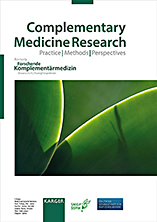
Systematic Review
Soy food intake, particularly fermented soy products, appear to have a protective effect on fracture risk among Asian women, especially in early menopause.
Akhavan Zanjani M, Rahmani S, Mehranfar S, Zarrin M, Bazyar H, Moradi Poodeh B, Zare Javid A, Hosseini SA, Sadeghian M

Cohort Study
Intermittent fasting during Ramadan can lead to rapid improvement of rheumatoid arthritis activity, with positive effects lasting up to three months.
Ben Nessib D, Maatallah K, Ferjani H, Triki W, Kaffel D, Hamdi W

Review Article
Acupuncture has been shown to significantly improve pain, disability, and quality of life for patients with shoulder impingement syndrome.
Park JE, Kim WY, Lee SJ, Oh DY, Lee MC, Jeon MK, Kim HJ, Ahn JY, Yang SH, Choi YY, Shin NY, Nam HJ
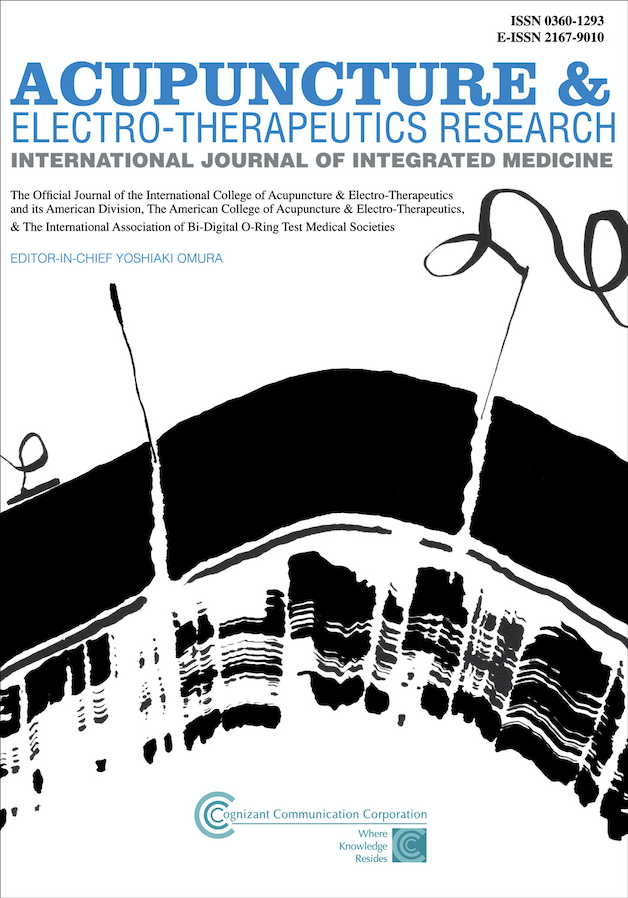
Systematic Review
Treatment of rheumatoid arthritis using acupuncture with Western medicine was associated with higher efficacy and lower risks than treatment with Western medicine alone.
Huo X, Liang L, Ding X, Bihazi A, Xu H
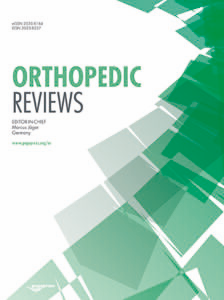
Review Article
Increasing evidence supports the use of acupuncture as part of multimodal approaches to the treatment of fibromyalgia with additive efficacy to traditional therapy.
Berger AA, Liu Y, Nguyen J, Spraggins R, Reed DS, Lee C, Hasoon J, Kaye AD

Systematic Review
Isoflavones found in soybeans can reduce risks of certain cancers and alleviate menopause-related symptoms among women, such as vasomotor syndromes, spinal bone loss, and hypertension.
Chen LR, Chen KH

Review Article
Acupuncture, in its various forms, shows significant potential in alleviating pain and improving shoulder function in patients with rotator cuff disorders.
Choi S, Lee J, Lee S, Yang GY, Kim KH

Systematic Review
Moderate-quality evidence revealed an association between acupressure and greater pain relief compared with physical therapy.
Tao Li , Xiaohui Li ,Fan Huang , Qiang Tian , Z. Y. Fan , and S. Wu

Adding acupuncture to conventional therapy may decrease the subsequent endometriosis risk in female rheumatoid arthritis patients.
Chen Wei-Jen, Livneh Hanoch, Hsu Chien-Hui, Hu Ying-To, Lai Ning-Sheng, Guo How-Ran, Tsai Tzung-Yi

Review Article
Acupuncture may be a clinically effective and safe treatment for Parkinson's disease.
Huang J, Qin X, Cai X and Huang Y
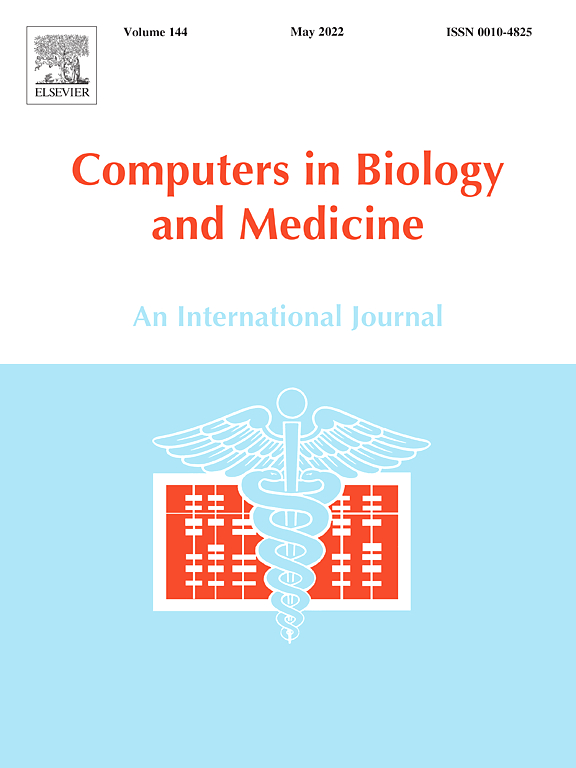
Network Pharmacology
Ba Ji Tian may prevent osteoporosis through the ovarian steroidogenesis signaling pathway. The anti-osteoporosis targets of Ba Ji Tian mainly play a role in the response to steroid hormones.
Liu ZW, Luo ZH, Meng QQ, Zhong PC, Hu YJ, Shen XL

Review Article
Green tea catechins potentially contribute to maintaining joint and skeletal muscle health, mitigating symptoms of osteoarthritis and sarcopenia.
Luk HY, Appell C, Chyu MC, Chen CH, Wang CY, Yang RS, Shen CL

Systematic Review
Acupuncture could significantly relieve pain and increase cure rate for acute ankle sprain, even producing improved results when combined with other therapies.
Liu AF, Gong SW, Chen JX, Zhai JB

Review Article
Beverages, through their diverse nutritional contents, have notable effects on rheumatoid arthritis progression by interacting with immune signaling pathways and altering the microbiome.
Dey M, Cutolo M, Nikiphorou E

Systematic Review
The majority of studies concluded the superiority of short-term analgesic effects over various controls and suggested that acupuncture may be efficacious for chronic musculoskeletal pain.
Zhang YJ, Wang C

Systematic Review
Du Huo Ji Sheng Decoction monotherapy or combined with antiosteoporosis drugs may have beneficial effects for postmenopausal osteoporosis.
Li J, Wang W, Feng G, Du J, Kang S, Li Z, Zhu W, Shang H
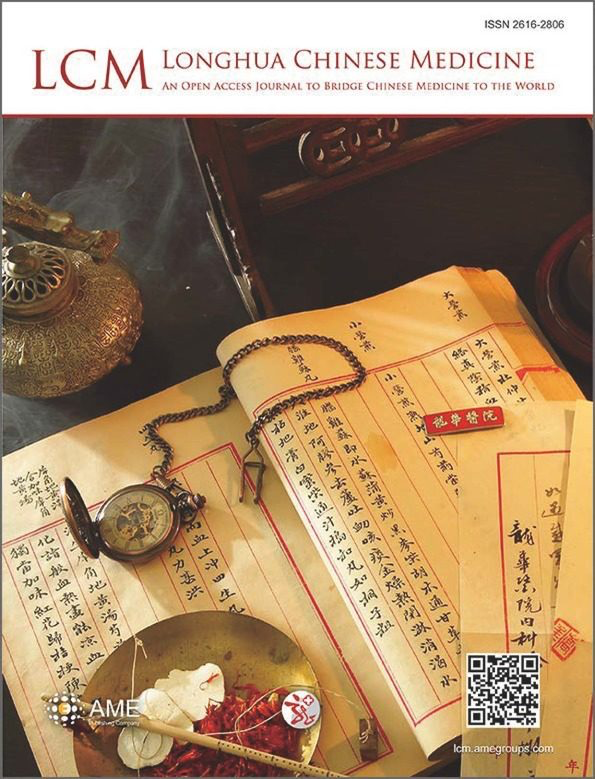
Review Article
Green tea and its compounds, especially catechins, may potentially prevent and treat osteoarthritis due to their potent antioxidant and anti-inflammatory properties.
Barbalho SM, Goulart RA, Buglio DS, Araujo AC, Guiguer EL
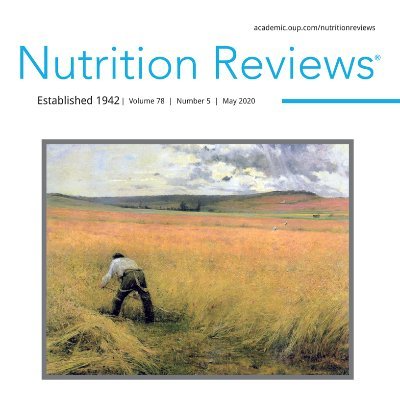
Systematic Review
High doses of omega-3 fatty acids, Vitamin D supplementation, and dietary sodium restriction showed significant improvement in reducing rheumatoid arthritis symptoms.
Philippou E, Petersson SD, Rodomar C, Nikiphorou E
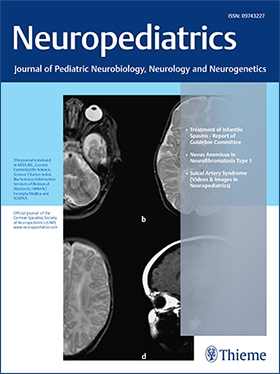
Systematic Review
Acupuncture and electroacupuncture are a therapeutic option for mild to moderate carpal tunnel syndrome with a medium level of scientific evidence, tending towards a high level, and with a medium level of recommendation.
Badia M, Santafé MM
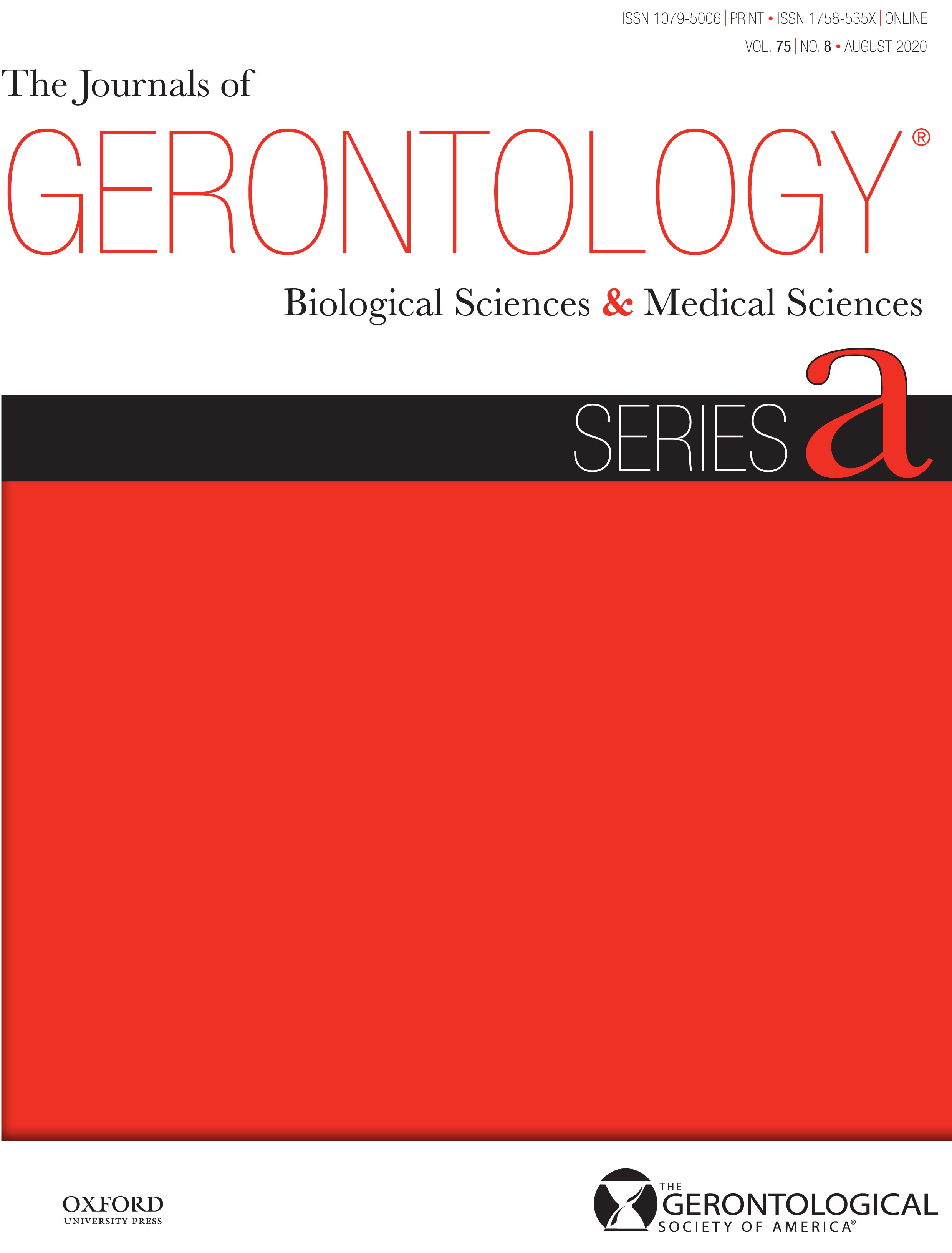
Cohort Study
Certain oxylipins, which are bioactive lipids derived from omega-6 and omega-3 polyunsaturated fatty acids, are potential key influencers in arthritis in older adults.
Coras R, Pedersen B, Narasimhan R, Brandy A, Mateo L, Prior-Español A, Kavanaugh A, Armando AM, Jain M, Quehenberger O, Martínez-Morillo M, Guma M

Systematic Review
Acupuncture appears to be superior to drug or blocking therapy or sham acupuncture therapy for lateral epicondylitis.
Zhou Y, Guo Y, Zhou R, Wu P, Liang F, Yang Z

Cohort Study
Ramadan fasting can induce rapid improvement in rheumatoid arthritis and spondyloarthritis activity without significantly affecting medication compliance or tolerance.
Ben Nessib D, Maatallah K, Ferjani H, Kaffel D, Hamdi W

Systematic Review
Acupuncture appears to be an effective and safe method to alleviate persistent myofascial head and neck pain.
Farag AM, Malacarne A, Pagni SE, Maloney GE.

Randomised Controlled Trial
Both individual and group acupuncture therapy delivered in primary care settings reduced chronic pain and improved physical function at 12 weeks.
McKee MD, Nielsen A, Anderson B, Chuang E, Connolly M, Gao Q, Gil EN, Lechuga C, Kim M, Naqvi H, Kligler B

Review Article
Omega 3 fatty acids can counter muscle lipotoxicity and prevent comorbidities in patients with rheumatoid arthritis, supporting muscle health and reducing cardiometabolic disease risk.
Lanchais K, Capel F, Tournadre A
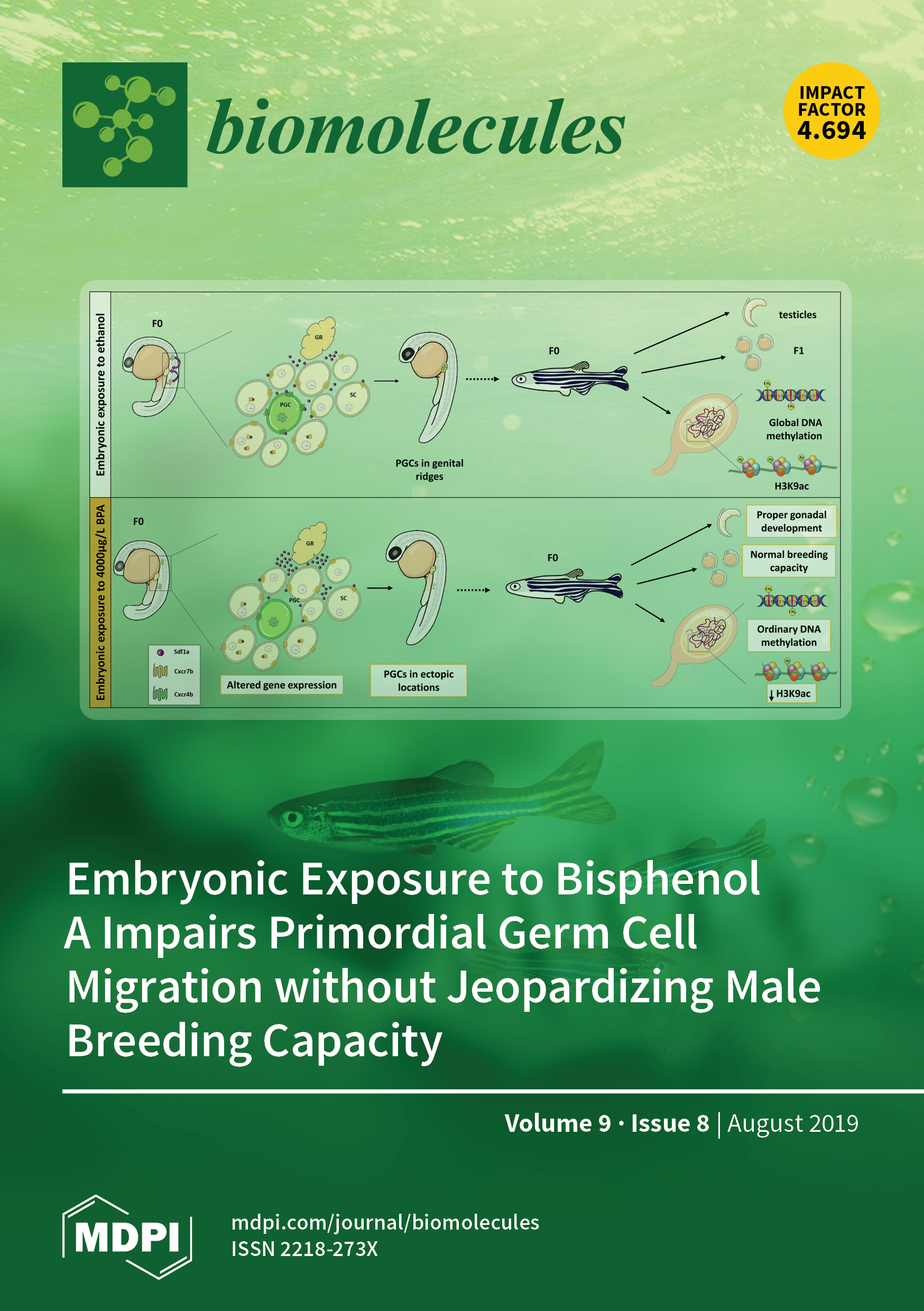
Review Article
Avocado and soybean unsaponifiables may effectively reduce inflammation and symptoms related to osteoarthritis, autoimmune diseases, and menopause.
Salehi B, Rescigno A, Dettori T, Calina D, Docea AO, Singh L, Cebeci F, Özçelik B, Bhia M, Dowlati Beirami A, Sharifi-Rad J, Sharopov F, C. Cho W, Martins N

Systematic Review
Gout patients regularly ingesting cherry extract/juice reported fewer gout flare ups than those patients who did not supplement their diets with cherry products.
Chen PE, Liu CY, Chien WH, Chien CW, Tung TH
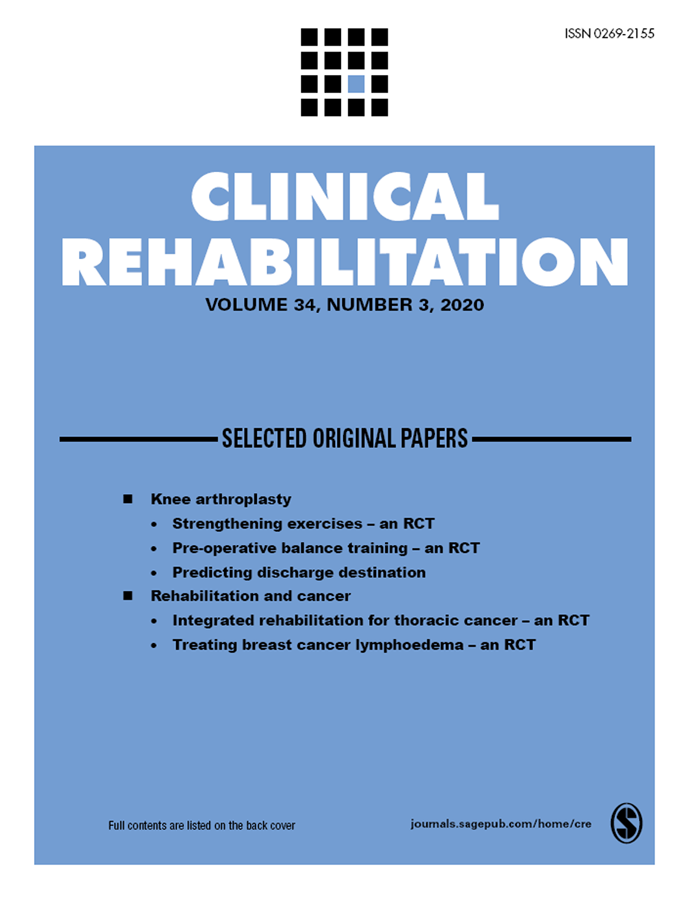
Systematic Review
For both symptom relief and function improvement, manual acupuncture is superior to ibuprofen for carpal tunnel syndrome.
Wu IXY, Lam VCK, Ho RST, Cheung WKW, Sit RWS, Chou LW, Zhang Y, Leung TH, Chung VCH

Review Article
Honey can protect the bone via its antioxidant and anti-inflammatory properties, primarily through its polyphenol content that acts upon several signalling pathways, leading to bone anabolic and antiresorptive effects.
Kamaruzzaman MA, Chin KY, Mohd Ramli ES
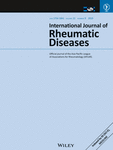
Systematic Review
Avocado-soybean unsaponifiables treatment is effective in reducing knee osteoarthritis symptoms without increasing adverse events, contrary to those with hip osteoarthritis.
Simental‐Mendía M, Sánchez‐García A, Acosta‐Olivo CA, Vilchez‐Cavazos F, Osuna‐Garate J, Peña‐Martínez VM, Simental‐Mendía LE
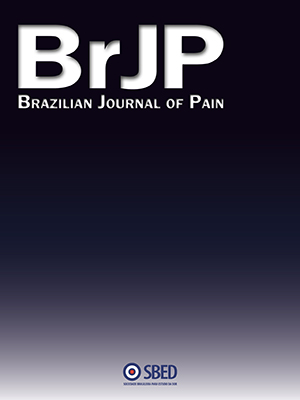
Systematic Review
Gua-sha has proved to be a relevant alternative for painful conditions involving the spine and the surroundings.
Dérrick Patrick Artioli; Gladson Ricardo Flor Bertolini
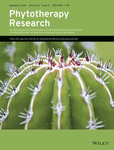
Experimental Study
Extract of pumpkin seeds displays estrogenic properties, potentially offering a solution to alleviate symptoms of menopausal syndromes resulting from estrogen deficiency.
Lestari B, Walidah Z, Utomo RY, Murwanti R, Meiyanto E

Theoretical Article
Chrysanthemum, a plant primarily grown in China and Japan, offers significant health benefits including stress reduction, cardiovascular improvement, and lowering osteoporosis risk.
SHAHRAJABIAN MH

Review Article
Blueberry anthocyanins have a potential role in preventing osteoporosis and demonstrate positive antioxidant and anti-inflammatory activity.
, Jones DR

Systematic Review
Cupping therapy has demonstrated notable effects in reducing chronic back pain in adults.
Moura, C. C., Chaves, É., Cardoso, A., Nogueira, D. A., Corrêa, H. P., & Chianca, T.

Systematic Review
In people with hip osteoarthritis, at close to 8 weeks, acupuncture plus routine primary physician care may improve pain and function compared to routine primary physician care alone.
Manheimer E, Cheng K, Wieland LS, Shen X, Lao L, Guo M, Berman BM.

Experimental Study
Higher iron levels after menopause appear to be risk factors for osteoporosis, and hormone hepcidin, which regulates iron, might be a potential therapeutic target for this condition.
Zhang P, Wang S, Wang L, Shan BC, Zhang H, Yang F, Zhou ZQ, Wang X, Yuan Y, Xu YJ
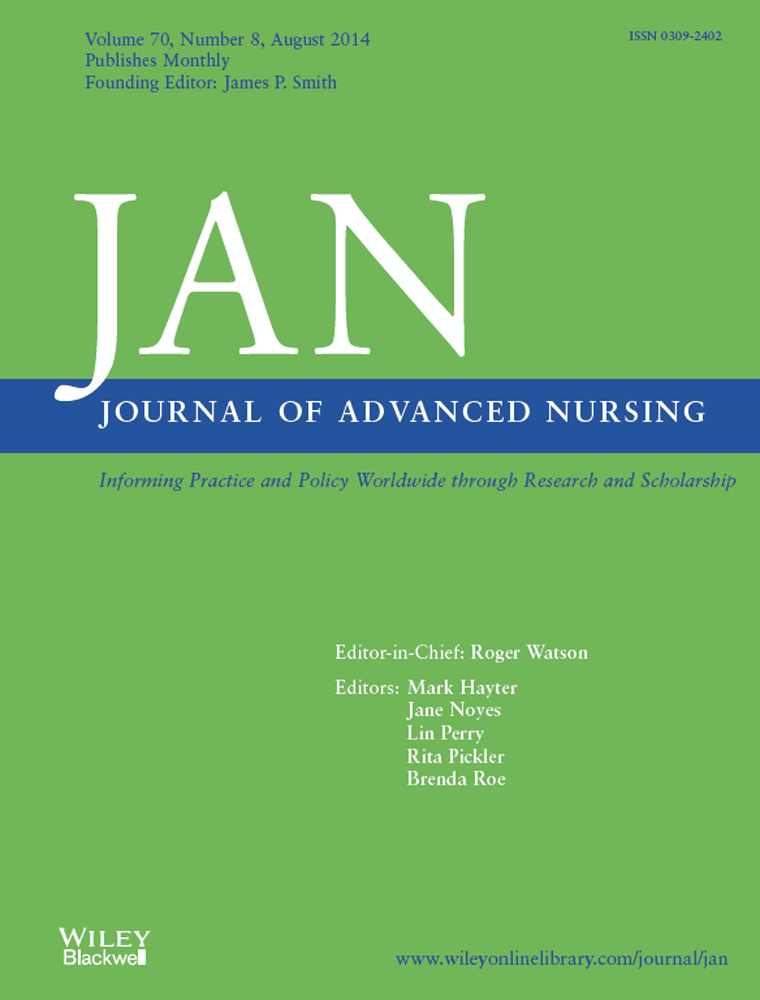
Systematic Review
Skin-patches of Chinese herbal medicine combined with Western medicine seemed to be more effective than Western medicine alone to reduce the pain scores of patients with acute gouty arthritis.
Wang HR, Fu Q, Liu Z, Li ML, Zhai SQ

Systematic Review
Compared with other therapies, acupuncture at ST38 appeared to reach a better therapeutic effectiveness in improving the recovery of shoulder joint mobility.
Yang C, Lv TT, Yu TY, Wong S, Lu MQ, Li YZ
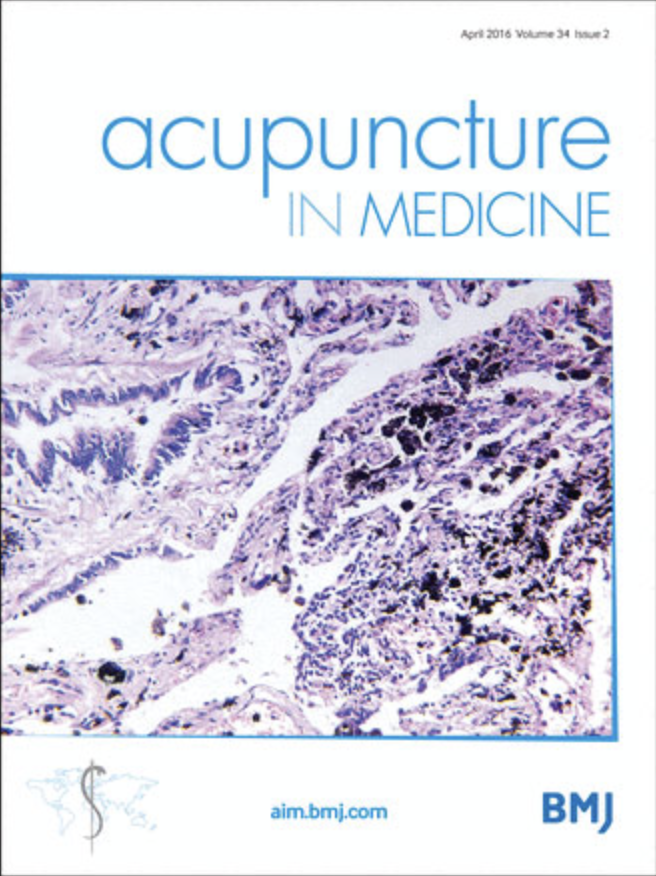
Systematic Review
Acupuncture showed a more favourable effect in the treatment of lumbar disc herniation than lumbar traction, ibuprofen, diclofenac sodium and meloxicam.
Tang S, Mo Z, Zhang R
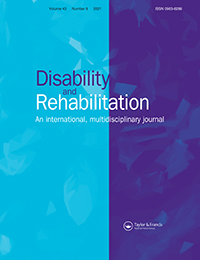
Systematic Review
Standard acupuncture was significantly more effective for restless legs syndrome severity than control conditions.
Harrison EG, Keating JL, Morgan PE.
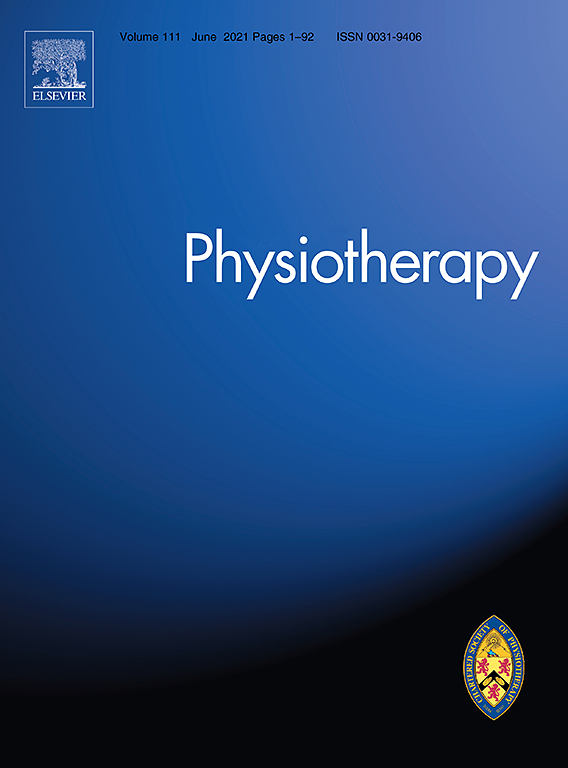
Systematic Review
Acupuncture combined with physiotherapy or exercise was found to be more effective for frozen shoulder than physiotherapy or exercise alone in the short and long term.
A. Rubio M. Mansfield J. Lewis

Systematic Review
Acupuncture may be effective at relieving chronic knee pain 12 weeks after acupuncture administration.
Zhang Q, Yue J, Golianu B, Sun Z, Lu Y.
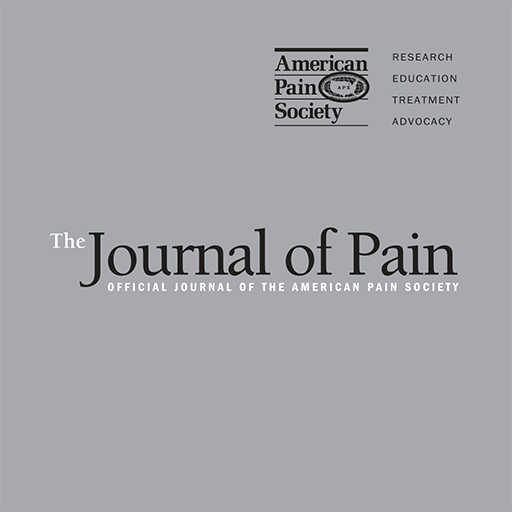
Systematic Review
Acupuncture has a clinically relevant effect on chronic pain that persists over time. Referral for acupuncture treatment is a reasonable option for chronic pain patients.
Vickers, Andrew J. et al.

Randomised Controlled Trial
The combination of acupuncture and a low dose of gabapentin (300 mg/d) is clinically effective in treating restless legs syndrome and has an additional therapeutic benefit compared to gabapentin alone.
Raissi GR, Forogh B, Ahadi T, Ghahramanpoori S, Ghaboussi P, Sajadi S
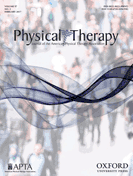
Systematic Review
Our findings support the use of tai chi as a treatment for people with arthritis and potentially for low back pain.
Amanda Hall, Bethan Copsey, Helen Richmond, Jacqueline Thompson, Manuela Ferreira, Jane Latimer, Chris G. Maher
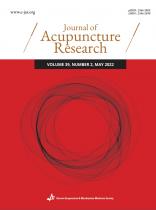
Systematic Review
Acupuncture, moxibustion, and laser acupuncture are effective as conservative therapies for the treatment of De Quervain's Stenosing Tenosynovitis.
Kong HJ, Kang JH, Yun GW, Oh SY, Lee H
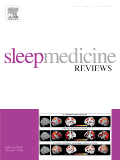
Systematic Review
The severity of primary restless legs syndrome symptoms can be significantly ameliorated by acupuncture.
Xu XM, Liu Y, Jia SY, Dong MX, Cao D, Wei YD.

Animal Study
Dried plums potentially prevent and reverse bone loss in postmenopausal women facing osteoporosis, offering a promising functional food therapy solution with long-lasting effects.
Arjmandi BH, Johnson SA, Pourafshar S, Navaei N, George KS, Hooshmand S, Chai SC, Akhavan NS

Review Article
Dried plums, or prunes, have potential to exert beneficial effects on bone health and may help in combating osteoporosis in postmenopausal women, if consumed as part of their recommended fruit intake.
Wallace T
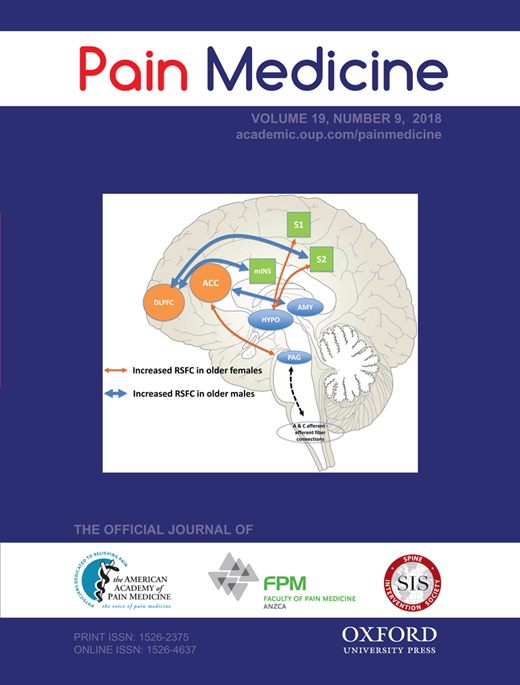
Randomised Controlled Trial
Our study provides evidence that acupuncture has a specific impact on frozen shoulder beyond the placebo effects that may not only be beneficial in reducing short-term pain perception, but may also have a positive long-term influence on the time course of recovery.
Schröder S, Meyer-Hamme G, Friedemann T, Kirch S, Hauck M, Plaetke R, Friedrichs S, Gulati A, Briem D

Network Pharmacology
A mixture of Chrysanthemum indicum Linne flower and Cinnamomum cassia significantly mitigates hyperuricemia in rats by inhibiting xanthine oxidase activity and enhancing uric acid excretion.
Lee YS, Son E, Kim SH, Lee YM, Kim OS, Kim DS
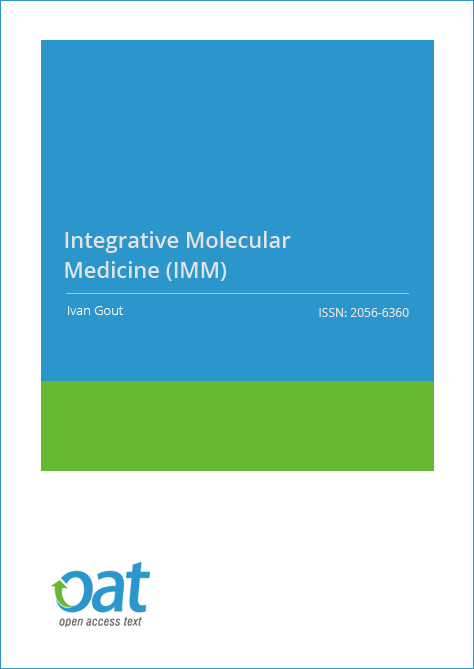
Randomised Controlled Trial
Luteolin, found in chrysanthemum flower extract, can potentially reduce serum uric acid levels, suggesting it may help prevent gout.
Hirano M, Takeda S, Hitoe S, Shimoda H
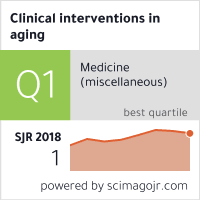
Systematic Review
The Chinese herbal formula Erxian decoction appears to be more effective than basic supplements in treating osteoporosis.
Li JY, Jia YS, Chai LM, Mu XH, Ma S, Xu L, Wei X

Randomised Controlled Trial
Acupuncture therapy can lead to both clinical and morphological improvements in patients with carpal tunnel syndrome.
Ural FG, Öztürk GT

Systematic Review
Acupuncture relieves neck pain better than sham acupuncture and those who received acupuncture report less pain and disability at short‐term follow‐up than those on a wait‐list.
Trinh K, Graham N, Irnich D, Cameron ID, Forget M.
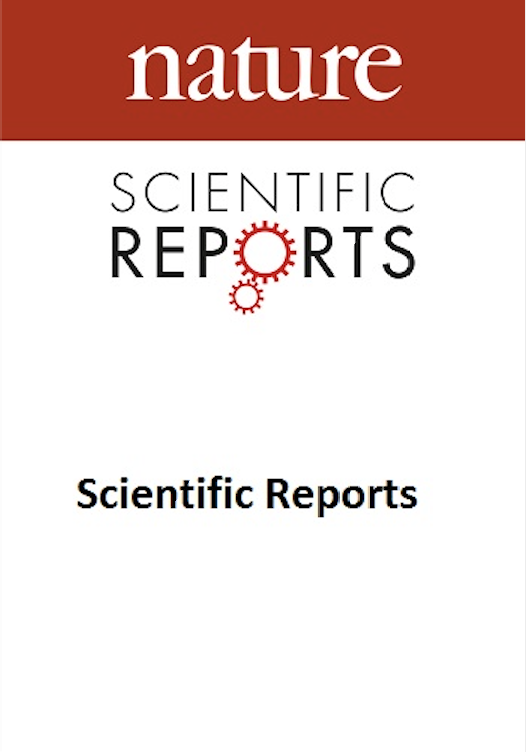
Systematic Review
Our meta-analysis found that, overall, acupuncture was superior to sham acupuncture in terms of pain relief and disability reduction for patients with musculoskeletal disorders.
Yuan QL, Wang P, Liu L, et al.
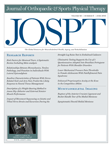
Systematic Review
Acupuncture, specifically needle-based and electroacupuncture, can potentially provide therapeutic benefits for carpal tunnel syndrome, Achilles tendinopathy, and shoulder injuries.
Cox, J., Varatharajan, S., Côté, P., & Optima Collaboration

Systematic Review
Acupuncture therapy is more effective than NSAID in improving clinical efficacy rates and pain scores for treatment of chrondomalacia patellae.
Lv Z.-T.a · Li Z.-Q.b · Zhou X.c · Ma W.-W.d · Zhang J.-M.a · Chen A.-M

Systematic Review
Acupuncture may be effective in treating the pain associated with sciatica.
Ji M, Wang X, Chen M, Shen Y, Zhang X, Yang J

Systematic Review
The use of acupuncture may be more effective than drugs and may enhance the effect of drugs for patients with sciatica.
Zongshi Qin, Xiaoxu Liu, Jiani Wu, Yanbing Zhai, Zhishun Liu,

Randomised Controlled Trial
Short-term acupuncture treatment is more effective than ibuprofen for mild to moderate carpal tunnel syndrome.
Hadianfard M, Bazrafshan E, Momeninejad H, Jahani N.

Randomised Controlled Trial
Chrysanthemum flower oil significantly reduces diet-induced elevation of serum uric acid in Japanese males with high baseline levels.
Ueda T, Honda S, Morikawa H, Kitamura S, Iwama Y, Nakagawa K

Systematic Review
The majority of trials demonstrate a positive effect of acupuncture over control condition in the treatment of neuropathy.
Alexandra Dimitrova, Charles Murchison, Barry Oken

Systematic Review
Acupuncture, either used in isolation or as an adjunct to conventional therapy, provides short-term improvements in pain and function for chronic low back pain.
Liu L, Skinner M, McDonough S, Mabire L, Baxter GD.

Experimental Study
Two new compounds found in Chrysanthemum indicum flowers have strong antioxidant qualities and are potent in anti-osteoporosis activity.
Luyen BTT, Tai BH, Thao NP, Lee YM, Lee SH, Jang HD, Kim YH
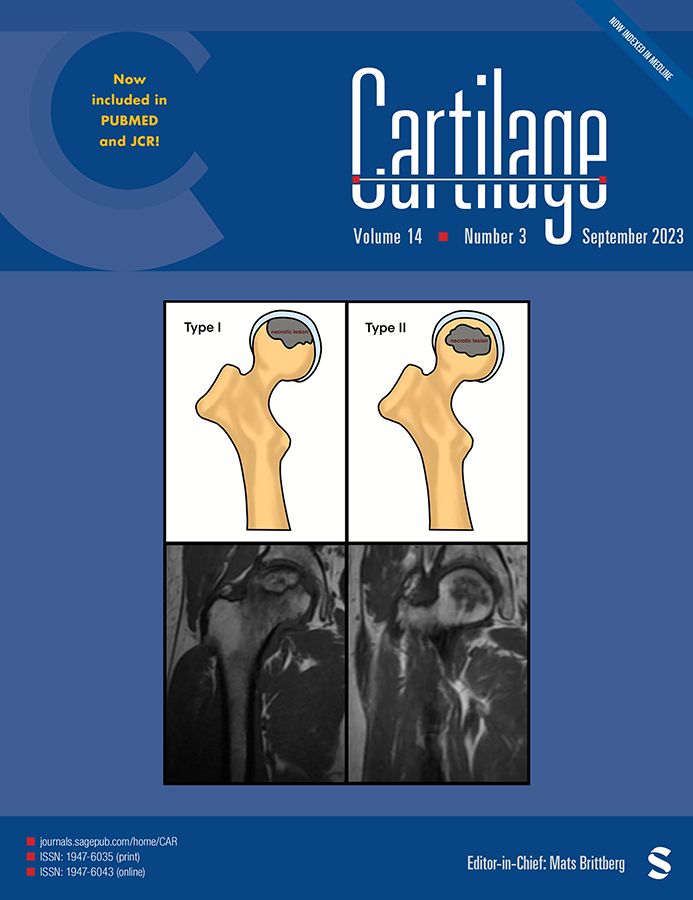
Review Article
A dietary supplement Avocado/Soybean Unsaponifiables aids in treating Osteoarthritis by preventing cartilage degradation and promoting cartilage repair, thereby reducing pain and enhancing joint functionality.
Christiansen BA, Bhatti S, Goudarzi R, Emami S
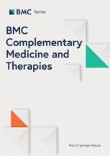
Systematic Review
The use of acupuncture for osteoarthritis is associated with significant reductions in pain intensity, improvement in functional mobility and quality of life.
Manyanga, T., Froese, M., Zarychanski, R. et al.

Randomised Controlled Trial
Acupuncture can be considered as an alternative option for treatment of De Quervain's tenosynovitis.
Hadianfard M, Ashraf A, Fakheri M, Nasiri A
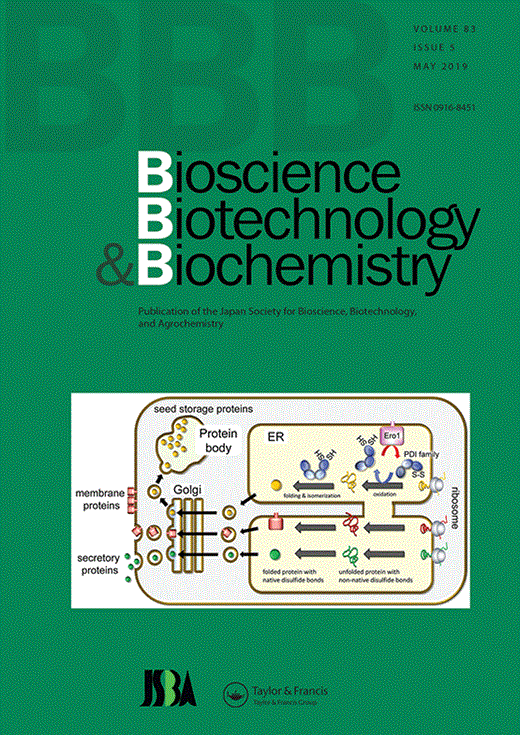
Network Pharmacology
Chrysanthemum flower oil can effectively decrease uric acid levels in rats, by reducing production in the liver and enhancing excretion from the kidney.
Honda S, Kawamoto S, Tanaka H, Kishida H, Kitagawa M, Nakai Y, Abe K, Hirata D

Systematic Review
Acupuncture showed both clinically important changes and statistically significant results for management of low back and/or pelvic pain (LBPP) in pregnancy.
Close C, Sinclair M, Liddle SD, Madden E, McCullough JE, Hughes C.
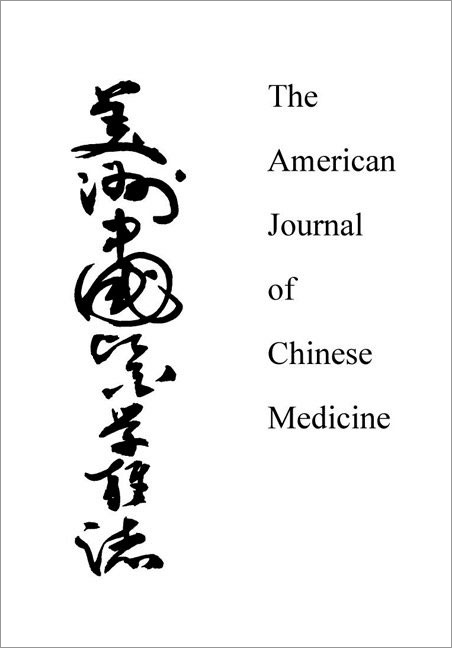
Randomised Controlled Trial
Acupuncture and electroacupuncture treatments can alleviate Carpal Tunnel Syndrome symptoms, enhance nerve repair and improve sensory and motor functions.
Ho CY, Lin HC, Lee YC, Chou LW, Kuo TW, Chang HW, Chen YS, Lo SF

Systematic Review
Chinese herbal medicine may help in functional recovery in gout patients, while safely controlling serum uric acid level and inflammation severity.
Li XX, Han M, Wang YY, Liu JP
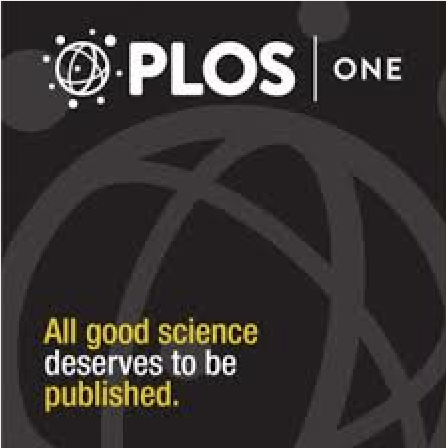
Animal Study
Dried plum intake uniquely improves bone density, promotes growth of vertebral trabecular bone, prevents bone loss in tibia, and positively adjusts bone metabolism.
Rendina E, Hembree KD, Davis MKR, Marlow D, Clarke SL, Halloran BP, Lucas EA, Smith BJ

Clinical Study
Hop extract, particularly its component 8-Prenylnaringenin (8-PN), demonstrates potential in alleviating symptoms common in menopause such as osteoporosis, vasomotoric disturbances, and sexual motivation.
Keiler A, Zierau O, Kretzschmar G

Randomised Controlled Trial
The daily use of avocado-soybean unsaponifiable-expanscience (ASU-E) reduces the progression of joint space narrowing in patients with hip osteoarthritis.
Maheu E, Cadet C, Marty M, Moyse D, Kerloch I, Coste P, Dougados M, Mazières B, Spector TD, Halhol H, Grouin JM, Lequesne M

Systematic Review
There is evidence supporting the effectiveness of acupuncture for plantar heel pain comparable to that available for conventionally used interventions, such as stretching, night splints or dexamethasone.
Clark RJ, Tighe M
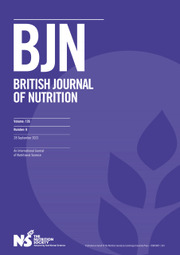
Randomised Controlled Trial
Dried plum consumption enhances bone mineral density in postmenopausal women, primarily by reducing the rate of bone turnover.
Hooshmand S, Chai SC, Saadat RL, Payton ME, Brummel-Smith K, Arjmandi BH

Systematic Review
A meta-analysis of acupuncture versus steroid block therapy favored acupuncture in terms of responder rate.
Lee, H., Shim, H., Shin, B., Jung, A., Lee, M., & Ernst, E.
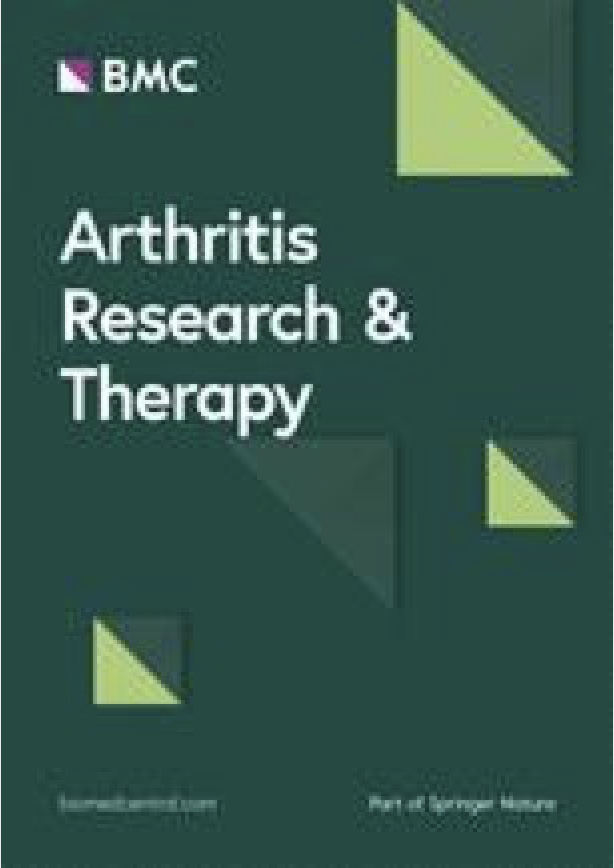
Experimental Study
Pomegranate extract can inhibit key cellular pathways and activities involved in the progression of osteoarthritis.
Rasheed Z, Akhtar N, Haqqi TM
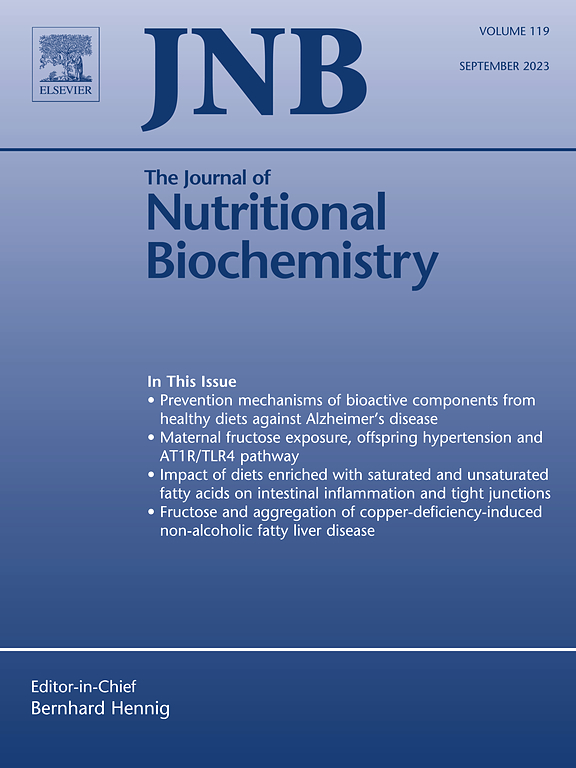
Experimental Study
Blueberry consumption can prevent bone loss and positively impact bone metabolism in ovariectomized rats.
Devareddy L, Hooshmand S, Collins JK, Lucas EA, Chai SC, Arjmandi BH
Executive Summary
Write an executive summary in the form of a blog article on the topic of "Research into Chinese medicine treatment for Musculoskeletal" summarising the research below and using language that can be easily understood by patients and avoiding medical jargon using a professional and caring tone of voice.
Write an executive summary in the form of a blog article on the topic of "Researched Chinese medicine treatments for Musculoskeletal" summarising the research below in an objective and easy to understand way, and using language that can be easily understood by patients. Group the article into Chinese medicine treatments first, followed by nutrition and other treatments. Avoid using medical jargon and use a professional and caring tone of voice.
Write me a concise but easy to understand executive summary on the topic of "Chinese medicine treatments for Musculoskeletal" based on the following research that I will give you. Your summary should be 2 paragraphs long in Australian English spelling and include references to the studies.
A Review Article published in 2024 in the journal Rheumatology International found that Despite diet being key in shaping gut microbiota, it surprisingly does not impact the treatment outcomes in individuals with Rheumatoid Arthritis. The process used to understand this paradox involved an umbrella review. This is an examination of multiple research studies and papers that address a similar question, in this case, the effects of diet on Rheumatoid Arthritis (RA). Through a comprehensive analysis of various scientific studies, researchers sought to determine if there was a meaningful link between diet and outcomes in RA patients. The results of this study revealed an unexpected conclusion. Despite the gut microbiota's critical role in shaping the risk of RA, the data showed that diet, which is a dominant factor in shaping our gut microbiota, did not appear to affect the treatment outcomes in individuals with RA. This finding is surprising given the generally accepted understanding of the influence of diet on gut health and correlates with disease states. This conclusion introduces a new perspective in the understanding of RA and its relationship with diet.
A Systematic Review published in 2023 in the journal Medicine found that Kidney tonic herbs may enhance bone density and reduce fracture risk in patients with primary osteoporosis. This research gathered and analyzed data from 43 randomized controlled trials involving 4349 participants, selected through extensive scrutiny conducted by two researchers. The aim was to evaluate the effectiveness and safety of Kidney tonic herbs in the treatment of primary osteoporosis. A comprehensive search of literature across eight electronic databases was performed up to September 30, 2022. The main focus of these trials was changes in bone mineral density of the lumbar area. The results, obtained through meta-analyses using RevMan 5.3 and Stata 16, indicated that kidney tonic herbs significantly increased bone mineral density in various anatomic sites. Examples of these are the lumbar area, femoral neck, and femoral trochanter. Moreover, the research found a decrease in fracture incidence, with no serious side effects reported. The herbs also showed superior pain relief potential. However, the impact of these herbs on fall incidence needs further exploration.
A Systematic Review published in 2023 in the journal Autoimmunity Reviews found that Intermittent fasting may potentially influence autoimmune diseases like type 1 diabetes and rheumatoid arthritis, by reducing inflammation and supporting cellular repair mechanisms. Extensive research was done through several electronic databases such as PubMed, Scopus, Embase, and Web of Science. Rigorous inclusion criteria were applied to filter the most relevant studies on the effects of intermittent fasting on autoimmune diseases. No reference to further research trials was mentioned in the methodology. The results indicate a potential link between intermittent fasting and the management of certain autoimmune diseases. Autoimmune diseases like type 1 diabetes, rheumatoid arthritis, and systemic lupus erythematosus exhibited improvements owing to the reduction in inflammatory markers, improvement in gut microbiota, and enhanced cellular repair resulting from autophagy induced by intermittent fasting. However, results concerning other autoimmune diseases like multiple sclerosis, systemic lupus erythematosus, thyroid diseases, and psoriasis were inconclusive.
A Review Article published in 2023 in the journal PharmaNutrition found that Soy protein, bioactive peptides, and isoflavones are generally safe for consumption and may help reduce the risk of several significant health conditions. Methodology: This review followed the Preferred Reporting Items for Systematic reviews and Meta-Analyses guidelines. It began with a sophisticated multi-database search, featuring resources like Google Scholar, Scopus, and others. This search targeted articles published from 2017 to March 2023 and used specific keywords for accuracy. Forty-three articles were handpicked from this process after excluding reviews, conference reports, duplicates, inaccessible texts, and any non-English publications. Discussion of Results: A thorough examination of the chosen articles resulted in the conclusion that soy proteins, soy bioactive peptides, and soy isoflavones are typically safe for human consumption. Furthermore, it was found that the consumption of these compounds may have beneficial effects, potentially lowering risk factors for ailments such as osteoporosis, various cancers, hypertension, atherosclerosis, and more.
A Clinical Study published in 2023 in the journal Journal of Clinical Medicine found that Rheumatoid arthritis-specific inflammation can be linked directly to the intestinal microbiota, thus, nutritional interventions against gut dysbiosis could function as a causal therapeutic approach. The study initiated by reducing the intestinal microbiome in 20 Rheumatoid Arthritis patients through bowel cleansing and a week of fasting, limiting the intake to 250 kcal/day. It also employed immune monitoring and sequencing of the microbiome. A control group constituting patients with metabolic syndrome was incorporated to serve as a non-inflammatory baseline. To understand the fluctuation and impact on disease activity, disease activity scores were calculated and cytometric profiling was performed, tracing up to 46 different surface markers. Additionally, serum levels of certain cytokines and indicators of mucosal barrier disruption were monitored. The change in intestinal microbiota, i.e., the effect of fasting on arthritogenic bacteria and the shift in microbial composition, was analyzed using sequencing. The detection of more eukaryotic, predominantly fungal colonizers in RA patients was also observed to understand their potential involvement. Finally, the study investigated the observed increase in endogenous cortisol levels during fasting.
A Systematic Review published in 2023 in the journal Medicine found that Tuina therapy for chronic low back pain indicates potential pain relief and reduced disability but doesn't improve quality of life Tuina's efficacy and safety for chronic non-specific low back pain demonstrates its potential for reducing pain and physical disability but not improving quality of life; adverse events were mild and self-resolving, suggesting Tuina's relative safety.
A Systematic Review published in 2023 in the journal Medicine found that Tuina massage for chronic low back pain reveals promising results amid methodological considerations The study confirms the potential of Tuina in mitigating low back pain-related pain and physical disability, though not significantly impacting quality of life. Reported adverse events, such as localized bruising and pain, were transient and self-resolving, indicating Tuina's relatively safe nature.
A Clinical Study published in 2023 in the journal Antioxidants found that Preclinical studies related to osteoporosis have reported favorable effects of honey on cortical and trabecular bone microstructure, bone strength, and oxidative stress. Honey is able to protect the bone mainly due to antioxidant and anti-inflammatory properties, primarily through its content of polyphenols, which act on several signaling pathways, resulting in anabolic and antiresorptive effects. From the group of polyphenols, the anti-osteoporotic impact of quercetin, kaempferol, and luteolin was recorded. In addition, vitamin D3 and its hydroxyderivatives with antioxidant properties were also detected in honey. Vitamin D3 supplementation was found to have protective effects on the inhibition of bone loss and BMD in both experimental animals and postmenopausal women.
A Clinical Study published in 2023 in the journal Antioxidants found that Clinical studies related to breast cancer have revealed that honey is effective in increasing blood cell counts, interleukin-3 levels, and quality of life. In relation to breast cancer, in vitro experiments revealed the anti-proliferative and pro-apoptotic impact of honey on breast cancer cells, as well as their increased apoptosis. Animal studies have shown that honey reduces the number, growth rate, volume, and tumor weight. Findings from clinical trials reported its immunomodulatory properties showing that honey is effective in increasing leukocyte and platelet counts, IL-3 levels, and quality of life. In this context, the potential role of honey and its oligosaccharides as prebiotics for specific beneficial bacteria might be examined in future clinical studies.
A Systematic Review published in 2023 in the journal Frontiers in Neuroscience found that Acupuncture's effectiveness for carpal tunnel syndrome uncovers better pain relief compared to night splints and potential benefits when used alongside other treatments Acupuncture was found to be more effective than night splints for pain relief, but no differences were observed in symptom severity and functional status. When used alongside other treatments, acupuncture showed potential in improving various CTS factors. However, the evidence quality was generally low or very low.
A Meta-Analysis published in 2023 in the journal Quality Assurance and Safety of Crops & Foods found that The traditional Chinese herbal medicine Shaoyao Gancao Tang (SG-Tang) may be an effective and safe alternative treatment to relieve Restless Leg Syndrome. The methodology used for this study involved a systematic review and meta-analysis of Randomized Clinical Trials (RCTs) assessing the efficacy and safety of SG-Tang treatment for Restless Leg Syndrome. Databases such as the Cochrane Library, PubMed, EMBASE, Web of Science, Chinese Biological Medicine Database, China National Knowledge Infrastructure, Wanfang Database, and VIP Information Database were searched. The primary and secondary outcome measurements looked at were the total effective rate, the International Restless Legs Syndrome Study Group Rating Scale for Severity of Restless Legs Syndrome, the Pittsburgh Sleep Quality Index, and the incidence of adverse events. The results of the study indicated that SG-Tang treatment led to significant improvements compared to conventional medications; it increased the total effective rate and lifted scores on the Severity of Restless Legs Syndrome and Sleep Quality Indices, while also lessening the incidence of adverse events. However, these conclusions should be interpreted with caution due to the limited data and the methodological quality of the included studies.
A Clinical Study published in 2022 in the journal Frontiers in Nutrition found that Moderate beer intake does not show a protective effect against bone loss in early post-menopausal women. In a 2-year controlled clinical intervention study, 31 postmenopausal women were divided into three groups: 15 consumed beer with alcohol daily, 6 consumed non-alcoholic beer daily, and 10 refrained from consuming any alcohol, non-alcoholic beer, and hop-related products. All participants underwent baseline and follow-up assessments, wherein plasma and urine samples were collected for biochemical testing, and data about their medical history, diet, and exercise habits were also gathered. The comprehensive, detailed examination involved the use of dual-energy X-ray absorptiometry to determine bone mineral density and trabecular bone score. Furthermore, yearly determinations of bone formation and bone resorption markers were made. The study showed that the markers of bone formation had indeed increased in the groups consuming beer with alcohol and non-alcoholic beer compared to the control group over the course of 2 years. However, there were no significant changes noted in the bone mineral density and trabecular bone score among the three groups throughout the study period. These findings contradict the hypothesis that moderate beer consumption could have protective effects against bone loss in early post-menopausal women.
A Randomised Controlled Trial published in 2022 in the journal Frontiers in Nutrition found that Fasting followed by a plant-based diet and a standard diet both positively affected rheumatoid arthritis disease activity and cardiovascular risk factors, without discernible differences. In this research, 53 rheumatoid arthritis patients were divided into two equal groups. One group underwent a 7-day fast and thereafter followed an 11-week plant-based diet. The second group adhered to a 12-week standard diet based on the dietary recommendations of the German society for nutrition. The main metric of comparison between the two groups was the change from baseline to 12 weeks on the Health Assessment Questionnaire Disability Index. The research showed that the fasting group noted an early improvement by day 7 and remained stable over 12 weeks. Meanwhile, the standard diet group showed slower but positive enhancements at 6 and 12 weeks. Furthermore, both dietary methods contributed to an improvement in disease activity scores of all the patients by week 12. Also, an advancement in cardiovascular risk factors, notably weight loss, was more prominent in the fasting group than the standard diet group.
A Systematic Review published in 2022 in the journal Pharmacological Research - Modern Chinese Medicine found that Guizhi Shaoyao Zhimu Decoction was more effective and had fewer adverse reactions compared to the control group in the treatment of gout and the combined use of modified GSZD with other treatments showed decreased levels of C-reactive protein and erythrocyte sedimentation rate. This meta-analysis of 22 randomized controlled trials showed that Guizhi Shaoyao Zhimu Decoction (GSZD) was more effective and had lower adverse reactions compared to the control group for gout, and the combined use of modified GSZD with other treatments showed significant decreases in C-reactive protein and erythrocyte sedimentation rate levels.
A Systematic Review published in 2022 in the journal Journal of Acupuncture Research found that Electroacupuncture treatment for carpal tunnel syndrome was reported to be effective and showed a significant difference from the control group. Although electroacupuncture treatment for carpal tunnel syndrome was reported to be effective and showed a significant difference from the control group, in some evaluation items no significant differences were observed. The quality and the number of studies included in this review was limiting, therefore an accurate evaluation of the efficacy of electroacupuncture treatment for CTS was not possible.
A published in 2022 in the journal Journal of Pharmacy and Pharmacology found that Traditional Chinese medicine exhibits fewer side effects while effectively controlling inflammation and serum uric acid in gout patients. In the methodology, the research used herbs as a primary resource, focusing on their phytochemicals. The study examined how these phytochemicals exert anti-inflammatory effects by inactivating the NF-κB and NLRP3 inflammasome, as well as lowering uric acid through the inhibition of xanthine oxidase activity and the up-regulation of URAT1 and GLUT9 expressions. Further, the study explored the relation of changes in intestinal flora and gout, with Chinese herbs acting like prebiotics to modify this flora. In terms of results, the study found an increase in the abundance of certain beneficial bacteria, such as Bifidobacterium, Lactobacillus, Bacteroidetes, and Prevotella, and a decrease in Proteus and the Firmicutes/Bacteroidetes ratio post traditional Chinese medicine treatment. The alterations in the intestinal flora led to changes in its metabolites, which eventually impacted inflammatory signaling pathways, regulating gene expressions and suppressing xanthine oxidase activity. The study also observed the relation between the disruption of the intestinal barrier and the onset of gout.
A Systematic Review published in 2022 in the journal International Journal of Environmental Research and Public Health found that Dietary strategies, such as caloric restriction and ketogenic diets, can alleviate chronic pain and enhance quality of life. This systematic review selected 16 articles from various databases including PubMed, Web of Sciences, ProQuest, and Scopus that were published within the last 6 years. These consisted of randomized clinical trials (RCTs), observational studies, and systematic reviews evaluating the effectiveness of different dietary strategies in the treatment of chronic pain. A range of assessment scales—PEDro, PVI, QUALSYT and the Quality Assessment Tool of Systematic Reviews scale— were utilized to gauge the risk of bias in these studies. The findings indicate an inconclusive consensus on the impact of an intermittent fasting (IF) diet on pain improvement. However, a caloric restriction diet emerged as a potential long-term treatment option for pain. Additionally, time-restricted food and ketogenic diets showed promising results in improving life quality in chronic conditions. Despite some studies indicating opposite results, the majority of the selected articles exhibited good methodological quality on their respective assessment scales.
A Randomised Controlled Trial published in 2022 in the journal Annals of the Rheumatic Diseases found that Fasting followed by a plant-based diet positively impacts disease activity and cardiovascular risk factors in rheumatoid arthritis patients. In the pilot study, patients with rheumatoid arthritis (RA) were split into two groups: one underwent a 7-day fast (consuming no more than 250 calories per day), followed by 11 weeks of a plant-based diet; the other was provided with conventional nutritional counseling according to the recommendations of the German Society for Nutrition for a total of 12 weeks. Disease activity and treatment responses were evaluated at the beginning of the experiment, day 7, week 6, and week 12. The results showed improvements in disease activity in both the fasting and conventional nutritional counseling groups. Noteworthy was the fact that the fasting group started showing improvements by day 7 as opposed to week 6 in the conventional group. Additionally, cardiovascular risk factors, such as weight and total cholesterol levels, showed more marked improvement in the fasting group compared to the conventional group. These improvements were found to be independent of any antibody status, intervention delivery method, or previous eating habits.
A Systematic Review published in 2022 in the journal Frontiers in Nutrition found that Higher consumption of coffee and specifically decaffeinated coffee raises the risk of rheumatoid arthritis, while caffeinated coffee, tea and caffeine intake doesn't. In the methodology, a dose-response meta-analysis of prospective cohort studies was carried out to evaluate the association between dietary caffeine, and different types of coffee and tea consumption with rheumatoid arthritis (RA). Relevant research papers were identified through a database search in PubMed/Medline, Scopus and EMBASE until July 2021. The studies considered different types of coffee, caffeinated or decaffeinated, tea or caffeine exposure with RA as the main or one of the outcomes. Out of 742 publications, five studies were selected for inclusion in the meta-analysis. Pooled relative risks were calculated through a fixed-effects model. Both linear and non-linear dose-response analyses were conducted to inspect dose-response relations. The analysis of results revealed a significant association between the consumption of coffee, especially decaffeinated coffee and increased risk of RA, when comparing between extreme categories of consumption. For each additional cup of coffee consumed daily, there was a notable increase in the risk of RA. However, this study found no significant link between the intake of caffeinated coffee, tea or caffeine intake and the risk of RA.
A Systematic Review published in 2022 in the journal Medical Acupuncture found that Acupuncture may be effective and safe for short-term pain reduction and functional improvement in hand-and-wrist conditions. In the 10 included RCTs (622 participants), 6 had a low risk of bias. For cryotherapy-induced pain, 1 trial showed significant pain reduction post treatment. For rheumatoid arthritis, 1 trial shown significant pain reduction and function improvements post treatment and short-term. For carpal tunnel syndrome, 1 trial showed significant pain reduction and functional improvements intermediate-term, while 3 trials suggested no significant difference. For tenosynovitis, 1 trial showed significant pain reduction and function improvements short-term. For poststroke impairments, 1 trial showed significant function improvements post treatment and at short-term, while another trial suggested no significant difference. No significant improvements were noted for trapezio-metacarpal joint osteoarthritis. In 2 trials, adverse effects occurred in patients with carpal tunnel syndrome; yet acupuncture appeared to be relatively safe.
A Systematic Review published in 2022 in the journal Journal of Ethnopharmacology found that Adding Du Huo Ji Sheng Decoction on bisphosphonate medications seems to be an effective and safe strategy in treating patients with osteoporosis. Seventeen RCTs (n = 1526) met eligibility criteria, and were included in this synthesis. Pooled estimates demonstrated that as compared with no DHJSD, DHJSD-B led to significantly higher efficacy rates, more lumbar BMD, lower pain score, and lower overall adverse event rates.
A Review Article published in 2022 in the journal Reference Series in Phytochemistry found that Coconut water possesses unique compound profiles that imbue it with a broad spectrum of medical properties, incorporating aspects of nutrition, pharmacology, and disease prevention. The study utilized comprehensive analysis to assess the chemical profile of coconut water, identifying a range of components including phytohormones, enzymes, antioxidant compounds, vitamins, minerals, and phenolic compounds. These components are known to contribute to the water's biological activity and pharmacological effects, thereby enabling a raft of medicinal properties inherent to coconut water. The water was found to feature anti-microbial, anti-bacterial, anti-inflammatory, anti-hypertensive, rejuvenating, hepatoprotective, hypolipidemic, and diuretic properties. An examination of the therapeutic effects of coconut water revealed a significant impact on gastric dysfunction, dysentery, and child malnutrition alongside notable capabilities to manage hypertension. The water was found to promote exercise performance, reduce swelling, dissolve kidney stones, improve kidney function, improve digestion, relieve constipation, reduce the risk of heart disease, lower high blood pressure, and improve cholesterol levels. Consumption of tender coconut water was specifically found to reduce the risk of heart disease, help prevent Alzheimer’s disease pathologies and prevent osteoporosis in experimental animals. The unique nutritional profile of coconut water was also found to provide it with the capacity to balance body chemistry and fight cancer.
A Systematic Review published in 2021 in the journal Health Promotion Perspectives found that Pomegranate has been confirmed to improve clinical features and reduce inflammatory, oxidative stress, and apoptosis markers in osteoarthritis. In the methodology, a systematic review was conducted using established databases like Scopus, PubMed, Embase, WOS, ProQuest, and Google Scholar up until February 2021. Both MESH and non-MESH keyword searches were performed in the title, abstract, and keywords. The review considered full-text clinical, animal, and in vitro studies in all languages and specifically excluded review articles, book chapters, conference abstracts, and research related to pomegranate in health problems other than osteoarthritis. A manual search was performed to examine the references or citations of eligible papers as well as grey literature to discover potential researches. The results of the systematic review included twenty-three articles which all showed the beneficial impact of pomegranate across human, animal, and in vitro studies. These showed improvements in clinical presentations and reductions in inflammatory, oxidative stress, and apoptosis markers in osteoarthritis. This demonstrated the therapeutic potential of pomegranate for easing the effects of osteoarthritis.
A Review Article published in 2021 in the journal Frontiers in Medicine found that The ketogenic diet, by reducing carbohydrate intake, shows potential in weight loss, insulin requirement reduction, and mitigation of inflammatory symptoms in patients with inflammatory arthritis. The ketogenic diet operates on the principle of substantially limiting carbohydrate consumption with a daily calorie percentage between 5-10%, facilitating a metabolic switch towards the use of ketone bodies. Studies indicate promise in a variety of applications including weight loss, insulin requirement minimization in diabetes, cancer protocol supplementation, neurological treatment, and control optimization for metabolic and cardiovascular diseases. Although literature on the anti-inflammatory properties of the ketogenic diet on rheumatic diseases is somewhat limited, their beneficial effects on weight loss are evidenced by related biomechanical and biochemical factors. Obesity is recognized to stimulate macrophage activation and generate pro-inflammatory cytokines including TNF-α, IL-1b, and IL-6. Furthermore, scientists believe that the ketogenic diet’s primary clinical effect could be linked to the enhancement of insulin sensitivity. Insulin resistance demonstrates a correlation with increased TNF-α, IL-1α, IL-1β, IL-6, and leptin. Additionally, reduction in body adipose tissue and weight loss contribute to the anti-inflammatory effects and their impact on cardiovascular health. Within the context of rheumatoid arthritis, fasting has been shown to reduce disease symptoms, potentially through the production of a key ketone body, β-hydroxybutyrate, which may also stifle IL-17. This, combined with intermittent fasting, was shown to provide symptomatic improvements in psoriatic arthritis. However, the current literature does not allow for definitive conclusions regarding the effects of a ketogenic diet on ankylosing spondylitis.
A Systematic Review published in 2021 in the journal Medical Acupuncture found that Acupuncture displays potential as a safe and effective treatment for foot and ankle pain, providing pain relief and functional improvement. The researchers gathered Randomized Controlled Trials (RCTs) from 6 major English databases, and relevant systematic reviews manually via Google Scholar. The selected RCTs studied the comparison of acupuncture with various types of sham acupuncture and nonactive or waitlist controls in terms of pain intensity, functional status, and general quality of life. All procedures including study screening, data extraction, risk of bias assessment, and quality assessment were conducted independently. Instead of performing a quantitative synthesis, the team opted for a narrative synthesis as quantitative pooling wasn't fit for the collected data. Four RCTs involving a total of 211 participants were included. Due to distinct clinical heterogeneity involving all the outcomes, the team did not conduct a quantitative analysis. Using a quality grading system, all outcomes were rated as supported by low or very low-quality evidence. Despite this, the study still showed acupuncture is potentially effective for treating participants with plantar fasciitis or Achilles tendinopathy, in terms of pain relief and functional status improvement, over short- and intermediate-term follow-ups. Notably, no adverse events linked to acupuncture use were reported.
A Systematic Review published in 2021 in the journal Complementary Therapies in Medicine found that Turmeric curcuminoids are associated with better pain relief than NSAIDs in knee osteoarthritis. The meta-analysis results showed that curcuminoids were significantly more effective than comparators regarding visual analogue scale (VAS) and Western Ontario and McMaster Universities Arthritis Index (WOMAC) pain scores. However, no significant difference in pain relief or AEs between the high-dose (daily dose ≥1000 mg or total dose ≥42 gm) and low-dose (daily dose <1000 mg or total dose <42 gm) curcuminoid treatments was observed. When comparing curcumininoids versus NSAIDs, a significant difference in VAS pain was found. For AE analysis, three of our included studies used NSAIDs as comparators, with all reporting higher AE rates in the NSAID group, though significance was reached in only one study.
A Meta-Analysis published in 2021 in the journal Nutrients found that Anti-inflammatory diets can lead to significantly lower levels of pain than regular diets for those with rheumatoid arthritis. During the study, the researchers investigated the impact of potentially anti-inflammatory diets (including Mediterranean, vegetarian, vegan, and ketogenic) on pain caused by rheumatoid arthritis. They used variables such as pain on a visual analogue scale, levels of C-reactive protein, erythrocyte sedimentation rate, health assessment questionnaire, disease activity score, tender/swollen joint counts, and measurements of weight, and body mass index. For their sources, the team scoured databases like MEDLINE, Embase, and CINAHL and ended up with 564 unique publications, out of which 12 were used in the systematic review and 7 in the meta-analysis. The results were obtained using a meta-analysis of eligible randomized controlled trials in RevMan 5. To compute the results, the mean differences or standardized mean differences were employed, and the inverse variance method of pooling was used with a random-effects model. In terms of bias risk assessment, all the studies used were identified as having a high risk of bias. Despite this, the results showed a consistent pattern that the anti-inflammatory diets resulted in significantly lower pain than regular diets for individuals suffering from rheumatoid arthritis.
A Systematic Review published in 2021 in the journal Complementary Medicine Research found that Soy food intake, particularly fermented soy products, appear to have a protective effect on fracture risk among Asian women, especially in early menopause. The research team carried out a systematic review of prospective cohort studies investigating the link between soy food intake and fracture risk. The databases searched were PubMed, Scopus, and Embase up to June 2021, and the team narrowed down 695 records to include 5 high-quality cohort studies. These selected studies were mostly conducted in China, Singapore and Japan and varied in their focus on different types of fractures. The dietary intake of soy food was assessed across all studies through face-to-face interviews. In the analysis of the results, a promising relationship was found between the consumption of soy foods and a reduced risk of fractures among Asian women, notably for those in the early stages of menopause or those who consumed fermented soy products. In contrast, the association was not significant among men.
A Cohort Study published in 2021 in the journal Clinical Rheumatology found that Intermittent fasting during Ramadan can lead to rapid improvement of rheumatoid arthritis activity, with positive effects lasting up to three months. In this prospective study, 35 patients with rheumatoid arthritis participated in fasting during Ramadan 2019. Their disease activity was assessed at three different time points: six months prior to the beginning of Ramadan, during the month between the seventh day of fasting and seventh day post Ramadan, and approximately 3.4 months after fasting. The disease activity score 28 was used to evaluate the activity of the disease. A significant decrease in all disease activity parameters was observed from the time six months prior to Ramadan to the time during fasting, followed by a gradual increase of clinical and biological outcomes between the end of fasting and the months following. However, the decrease of specific disease indicators that resulted from the Ramadan fast was maintained until the time point 3.4 months after fasting, despite the increasing trend. Thus, the overall improvements from fasting were found to be sustained for at least 3 months after the end of the Ramadan fasting period.
A Review Article published in 2021 in the journal Journal of Acupuncture Research found that Acupuncture has been shown to significantly improve pain, disability, and quality of life for patients with shoulder impingement syndrome. The research methodology involved a literature review of randomized controlled trials where acupuncture was used as an intervention for patients diagnosed with shoulder impingement syndrome. Relevant clinical studies were retrieved from several databases based on specific inclusion and exclusion criteria, and the interventions used, and results obtained were diligently analyzed. Six of these studies were chosen for an extensive review based on the stringent parameters defined. The results of these six studies testify to the apparent efficacy of acupuncture as a treatment for shoulder impingement syndrome. Upon analysis, the acupuncture treatment group consistently demonstrated significant positive changes in metrics evaluating pain, disability, and quality of life. There was an observed decrease in evaluative indicators such as Shoulder Pain and Disability Index, Numeric Rating Scale, Visual Analogue Scale, and others, and a considerable increase in the scores of the self-reported questionnaires like UCLA, AL-score, EuroQol 5 Dimension, and more. One study even reported acupuncture's effectiveness to be on par with corticosteroid injections in terms of improvements in pain and quality of life measures. Notably, no major side effects from acupuncture were reported across the studies.
A Systematic Review published in 2021 in the journal Acupuncture & Electro-Therapeutics Research found that Treatment of rheumatoid arthritis using acupuncture with Western medicine was associated with higher efficacy and lower risks than treatment with Western medicine alone. In total, 9 RCTs involving 698 patients were included for analysis. VAS, ESR, CRP, and RF were all shown to favor the combination of acupuncture with Western medicine compared to Western medicine alone. ST36 (Zusanli), EX-UE9 (Baxie), Ll11 (Quchi), GB34 (Yanglingquan), TE14 (Jianliao) and TE4 (Yangchi) were frequently used in 9 clinical trials.
A Review Article published in 2021 in the journal Orthopedic Reviews found that Increasing evidence supports the use of acupuncture as part of multimodal approaches to the treatment of fibromyalgia with additive efficacy to traditional therapy. Given the positive evidence in most studies examining the use of acupuncture as an adjunct to exercise, physical therapy, or pharmacological treatment, and in light of the safety and availability of the treatment, there seems to be increasing evidence supporting the incorporation of acupuncture as part of multi-modality treatment plans for fibromyalgia.
A Systematic Review published in 2021 in the journal International Journal of Molecular Sciences found that Isoflavones found in soybeans can reduce risks of certain cancers and alleviate menopause-related symptoms among women, such as vasomotor syndromes, spinal bone loss, and hypertension. The study overviewed soybeans' chemical composition and focused mainly on isoflavones. The research examined the processes of soybean preparation that includes cleaning, drying, crushing, and dehulling, and extraction methods to derive various soy products, particularly focusing on isoflavones - daidzein, genistein, and S-equol. Various soy products such as refined soy oil, soy lecithin, free fatty acids, glycerol, and soybean meal were discussed, along with the presence of the minor biological constituents in remaining components. The study explored the relationship between isoflavone consumption and disease prevention, particularly in relation to heart disease, cancer incidence—of the breast, bladder, and endometrial and colorectal—and menopause-related symptoms. The therapeutic effects of isoflavones were studied in the context of vasomotor syndromes, spinal bone loss, hypertension regulation, depressive symptoms during pregnancy, and in vitro glycemic control. In contrast, it failed to find definitive effects of isoflavones on cognition improvement and urogenital symptoms. The inconsistencies in defining the ingredients, doses, study durations, and outcomes of isoflavone studies proved challenging for the research.
A Review Article published in 2021 in the journal Journal of Acupuncture Research found that Acupuncture, in its various forms, shows significant potential in alleviating pain and improving shoulder function in patients with rotator cuff disorders. The participating researchers examined a multitude of sources, involving 12 electronic databases and 3 trial registries until November 2019, poring over any applicable randomized trial regardless of its language or date of publication. The research primarily focused on pain symptoms, the functionality of the shoulder, and the ratio of participants showing improvement within 12 weeks since the initiation of the trial. They adopted the Grading of Recommendations Assessment, Development and Evaluation approach to assess the certainty of evidence, while the included studies' bias risks were evaluated using the Cochrane risk of bias tool. Various types of acupuncture were evaluated, including manual acupuncture, dry needling, electroacupuncture, acupotomy, warm needle acupuncture and fire needle acupuncture, extracted from a total of 28 randomized trials involving 2,216 participants. The results gleaned from these trials suggest that acupuncture could indeed have a significant impact on the relief of pain and the enhancement of shoulder function for patients suffering from rotator cuff diseases. However, discrepancies between the trials resulted in considerable heterogeneity. Despite this, no significant harm was observed amongst the patients. However, due to the level of uncertainty associated with the data and the partialness of the reports, the safety of acupuncture is still up for debate.
A Systematic Review published in 2021 in the journal Evidence-Based Complementary and Alternative Medicine found that Moderate-quality evidence revealed an association between acupressure and greater pain relief compared with physical therapy. The systematic review and meta-analysis included 23 RCTs with 2400 participants with low back pain. Consistent with previous systematic reviews, moderate-quality evidence revealed an association between acupressure and greater pain relief compared with physical therapy. Although rated as very-low to low, poor quality evidence suggested that acupressure, with or without combinative acupuncture therapy, contributed to a greater amelioration of pain and functional disability from low back pain compared with usual care, tuina massage, or acupuncture. Trial sequential analysis results revealed that adequate studies supported the significance of the clinical response rate of acupressure, with or without combinative acupuncture therapy, compared to other treatments.
A published in 2021 in the journal Frontiers in Medicine found that Adding acupuncture to conventional therapy may decrease the subsequent endometriosis risk in female rheumatoid arthritis patients. Between 1998 and 2010, female subjects with RA were recruited from a nationwide database (5,736 patients; age ≥20 years). Enrolled patients included 2,407 acupuncture users and 2,407 nonusers randomly selected using propensity scores. The occurrence of endometriosis was recorded through the end of 2012. Cox proportional hazards regression was used to estimate the adjusted hazard ratio (HR) associated with acupuncture use. Results: During the follow-up period, 35 acupuncture users and 94 non-users developed endometriosis, with incidence rates of 2.36 and 4.91 per 1,000 person-years, respectively. Acupuncture use was associated with a 55% lower endometriosis risk. Those who received high intensity acupuncture (≥15 packages) had the greatest benefit. The results of multivariable analysis demonstrated that the use of acupuncture was related to a significantly reduced risk of endometriosis. In the subgroup analysis, the medium- to high-level intensity acupuncture use was found to possibly lessen the risk of having endometriosis for more than 70%. We discovered that the post-rheumatoid arthritis acupuncture use would significantly reduce the risk of endometriosis in a dose-dependent manner.
A Review Article published in 2020 in the journal Frontiers in Neurology found that Acupuncture may be a clinically effective and safe treatment for Parkinson's disease. In this study, a thorough search was done in eight different databases to find systematic reviews and meta-analyses that investigated the potential benefits of acupuncture for treating Parkinson's disease. The methodological quality of these collected reviews was assessed using the Assessing the Methodological Quality of Systematic Reviews 2 checklist, and the quality of the evidence provided by the reviews was evaluated with the Grading of Recommendations, Assessment, Development, and Evaluation criteria. Of the 11 reviews analysed, all were regarded as very low-quality studies on the Assessing the Methodological Quality of Systematic Reviews 2 checklist. However, despite the limited quality, these reviews provide a narrative analysis that suggests acupuncture may offer a safe and effective treatment for Parkinson's disease. The Grading of Recommendations, Assessment, Development, and Evaluation scale categorized the evidence quality as very low to moderate. Despite the overall low evidence and methodological quality, it is highlighted that acupuncture may still hold potential as a treatment option for Parkinson's disease. It's also noted that the results should be interpreted with caution due to the low quality of the studies included.
A Network Pharmacology published in 2020 in the journal Computers in Biology and Medicine found that Ba Ji Tian may prevent osteoporosis through the ovarian steroidogenesis signaling pathway. The anti-osteoporosis targets of Ba Ji Tian mainly play a role in the response to steroid hormones. A total of 17 active compounds and 93 anti-osteoporosis targets of M. officinalis were selected for analysis. The GO enrichment analysis results indicated that the anti-osteoporosis targets of M. officinalis mainly play a role in the response to steroid hormone. The KEGG pathway enrichment analysis showed that M. officinalis prevents osteoporosis through the ovarian steroidogenesis signaling pathway. Moreover, the molecular docking results indicated that bioactive compounds (morindon, ohioensin A, and physcion) demonstrated a good binding ability with IGF1R, INSR, ESR1, and MMP9.
A Review Article published in 2020 in the journal Antioxidants found that Green tea catechins potentially contribute to maintaining joint and skeletal muscle health, mitigating symptoms of osteoarthritis and sarcopenia. The research begins by providing an understanding of osteoarthritis, a degenerative inflammatory disorder of articular cartilage, and sarcopenia, a condition characterized by loss of muscle mass and strength. It explores their prevalence, causes such as excessive inflammation and oxidative stress, mitochondrial dysfunction, and diminished autophagy. It then delves into the role of green tea catechins in joint health, including their influence on inflammatory signaling agents, anabolic mediators, and miRNAs expression. This leads to a decrease in chondrocyte death and collagen degradation, thereby offering cartilage protection. The investigation also examines the effects of green tea catechins on skeletal muscle health. It highlights their role in maintaining an equilibrium between protein synthesis and degradation, and enhancing the synthesis of mitochondrial energy metabolism. The review thus suggests a positive impact of green tea catechins on joint and muscle health, helping to maintain favorable muscle homeostasis and reduce muscle atrophy associated with aging. It ends by pointing out the limitations of the current study and proposing future research directions.
A Systematic Review published in 2020 in the journal Evidence-Based Complementary and Alternative Medicine found that Acupuncture could significantly relieve pain and increase cure rate for acute ankle sprain, even producing improved results when combined with other therapies. The researchers executed parallel-group randomized controlled trials without any language or publication date restraints. Participants suffering from acute ankle sprains were included irrespective of their demographic details, or the diagnostic criteria used to confirm their condition. Experimental interventions consisted of acupuncture alone or a combination of acupuncture and traditional therapies, while the control interventions were either no treatment, placebo, or traditional therapies only. The Kofoed ankle score was the main outcome, with secondary outcomes covering a range of parameters from pain scale to cure rate. Several databases were searched to find potentially eligible studies up to the date of September 10, 2020, with trial registry platforms and the reference lists of the eligible studies also being verified for any ongoing or unpublished studies. The study analysed seventeen eligible studies to study the effect of acupuncture on acute ankle sprains. No significant difference was found between the Kofoed ankle scores of the acupuncture and Rest, Ice, Compression, Elevation (RICE) groups. However, acupuncture did show a significant impact on pain relief and an increased cure rate compared to the RICE group. The combination of acupuncture and RICE also resulted in a significant increase in pain relief and cure rate compared to just the RICE method. Acupuncture, when combined with massage, brought about a significant reduction in pain compared to just massage, while the combination with traditional Chinese medicine outperformed Chinese medicine alone in pain relief, duration of pain, and cure rate. There were almost no adverse reactions reported, with one mild drug-related allergic reaction which healed without any treatment.
A Review Article published in 2020 in the journal Nutrients found that Beverages, through their diverse nutritional contents, have notable effects on rheumatoid arthritis progression by interacting with immune signaling pathways and altering the microbiome. The researchers reviewed existing literature to assess the role of various beverages in the context of rheumatoid arthritis. The primary focus of their study was understanding how the molecular contents of beverages such as coffee, tea, and wine, are contributing to the development and progression of the disease by interfering with immune signaling pathways. Moreover, they examined how these beverages affect the microbiome, leading to downstream effects on inflammatory pathways. The outcomes of the analysis indicate that beverages indeed play a pivotal role in the autoimmunity of rheumatoid arthritis. They found evidence that certain components present in beverages could either benefit the disease progression or negatively contribute to it. The researchers also discovered that considering beverages in the wider context of dietary patterns can help to better understand their role in disease management.
A Systematic Review published in 2020 in the journal Current Rheumatology Reports found that The majority of studies concluded the superiority of short-term analgesic effects over various controls and suggested that acupuncture may be efficacious for chronic musculoskeletal pain. We examined 16 review articles and 11 randomized controlled trials published in the last 5 years on the clinical efficacy of acupuncture in adults with CMP conditions. The available evidence suggests that acupuncture does have short-term pain relief benefits for patients with symptomatic knee osteoarthritis and chronic low back pain and is a safe and reasonable referral option. Acupuncture may also have a beneficial role for fibromyalgia. However, the available evidence does not support the use of acupuncture for treating hip osteoarthritis and rheumatoid arthritis.
A Systematic Review published in 2020 in the journal Evidence-Based Complementary and Alternative Medicine found that Du Huo Ji Sheng Decoction monotherapy or combined with antiosteoporosis drugs may have beneficial effects for postmenopausal osteoporosis. Eight studies were enrolled with 650 participants. DHJSD alone or with other interventions had a significant effect on bone mineral density of the lumbar spine, E2, and clinical effectiveness. However, no effect at bone Gla protein was seen.
A Review Article published in 2020 in the journal Longhua Chinese Medicine found that Green tea and its compounds, especially catechins, may potentially prevent and treat osteoarthritis due to their potent antioxidant and anti-inflammatory properties. The researchers performed an extensive review exploring the potential impact of green tea and its bioactive compounds, chiefly catechins, on osteoarthritis management. Their focus was on the anti-inflammatory and antioxidant abilities of these compounds. Based on the review, such compounds can quell inflammation by blocking various signaling pathways interconnected with inflammatory processes. Specifically, they have the potential to suppress the expression of several cytokines and enzymes related to inflammation. In addition, green tea was noted for its property to neutralize free radicals, thus averting the formation of harmful reactive oxygen species and countering oxidative stress. While many conventional, non-surgical osteoarthritis therapies can lead to numerous adverse effects, the current review suggests that green tea could serve as a safer alternative. It may be a promising direction in the prevention and management of this chronic, painful, and inflammatory condition, which touches a significant number of people globally.
A Systematic Review published in 2020 in the journal Nutrition Reviews found that High doses of omega-3 fatty acids, Vitamin D supplementation, and dietary sodium restriction showed significant improvement in reducing rheumatoid arthritis symptoms. The study method involved conducting a systematic review, with all methods prespecified, in line with the Preferred Reporting Items for Systematic Reviews and Meta-Analyses guidelines. Relevant articles were found on Medline and Embase. Data were extracted from these articles by two independent reviewers, eventually identifying a total of 70 human studies that fit the scope of the research. The results indicated that the administration of omega-3 polyunsaturated fatty acids in high doses led to a decrease in rheumatoid arthritis disease activity, as well reduced failure rates of pharmacotherapy. Also, supplementing with Vitamin D and dietary sodium restriction had beneficial effects on some rheumatoid arthritis outcomes. Fasting resulted in significant but brief subjective improvements. Whilst the Mediterranean diet showed improvements in some rheumatoid arthritis disease activity measures, the results from vegetarian, elimination, peptide, or elemental diets implied that the responses are very individualized.
A Systematic Review published in 2020 in the journal Neuropediatrics found that Acupuncture and electroacupuncture are a therapeutic option for mild to moderate carpal tunnel syndrome with a medium level of scientific evidence, tending towards a high level, and with a medium level of recommendation. The search retrieved 698 articles in total. After applying the inclusion and exclusion criteria, 21 articles were included. The level of evidence of all the articles was medium-high. The level of recommendation was medium, and the risk of bias was neutral, with a tendency towards low bias. The articles included revealed symptomatic and neurophysiological improvements, both peripheral as well as central, due to the cerebral response that occurs associated with the function of the median nerve.
A Cohort Study published in 2020 in the journal The Journals of Gerontology: Series A found that Certain oxylipins, which are bioactive lipids derived from omega-6 and omega-3 polyunsaturated fatty acids, are potential key influencers in arthritis in older adults. The research method involved an observational prospective study of 64 patients over the age of 60 with newly diagnosed arthritis, which was categorized as Elderly-onset rheumatoid arthritis and polymyalgia rheumatica. Patients' blood samples were taken at the start of the study and 3 months post-treatment, with results compared to 18 control samples. A thorough clinical examination was conducted for each patient. Serum oxylipins (bioactive lipids derived from omega-6 and omega-3 polyunsaturated fatty acids) were determined through mass spectrometry, and data analysis was performed. In the discussion, it was found that the levels of certain oxylipin species were significantly different between control subjects and arthritis patients. Interestingly, the ratio of omega-3 to omega-6 polyunsaturated fatty acids was significantly downregulated in elderly-onset rheumatoid arthritis patients compared to controls. Two oxylipins, namely hydroxydocosahexaenoic acid and dihydroxy-eicosatrienoic acid, were identified as top candidates for differentiating polymyalgia rheumatica from elderly-onset rheumatoid arthritis. Following treatment, the levels of omega-3 derived anti-inflammatory species increased in elderly-onset rheumatoid arthritis patients.
A Systematic Review published in 2020 in the journal Pain Research and Management found that Acupuncture appears to be superior to drug or blocking therapy or sham acupuncture therapy for lateral epicondylitis. In conclusion, despite the limitations of the methodology, the results of this meta-analysis indicated that acupuncture therapy might be more effective than drugs and blocking therapy in improving the clinical efficacy rate and decreasing the VAS score. Well-designed RCTs with larger sample sizes and long-term follow-up on these topics are still needed to supply reliable evidence on the efficacy of acupuncture for treating lateral epicondylitis.
A Cohort Study published in 2020 in the journal Clinical Rheumatology found that Ramadan fasting can induce rapid improvement in rheumatoid arthritis and spondyloarthritis activity without significantly affecting medication compliance or tolerance. In the methodology, this study was a prospective, monocentric one that included patients with either rheumatoid arthritis or spondyloarthritis who partook in Ramadan fasting in 2019. The disease activity and management of chronic medications were assessed and compared in two visits - one six months before Ramadan fasting began and a second one after at least seven days of fasting. In the results, the study found that both rheumatoid arthritis and spondyloarthritis activity, as measured by Disease Activity Scores, decreased after patients fasted during Ramadan. In contrast, compliance with chronic medications and tolerance did not significantly change. These findings suggest fasting can be a potentially effective approach to improving disease activity in patients with rheumatoid diseases. Moreover, these findings provide reassurance to patients who may have fears about medication intake during Ramadan, which could improve adherence to treatment.
A Systematic Review published in 2020 in the journal Complementary Therapies in Medicine found that Acupuncture appears to be an effective and safe method to alleviate persistent myofascial head and neck pain. To investigate the impact of acupuncture on persistent myofascial head and neck pain, only randomized controlled clinical trials were considered. These studies were hunted in a variety of databases, including PubMed, Ovid Medline, Embase, Google Scholar, and the Cochrane Library, in addition to a manual search. The main metric used for outcome measurement was the comparison of the mean pain intensity score on the Visual Analogue Scale (VAS) between the acupuncture and sham-needling/no intervention groups. Additionally, safety data and adherence rate were looked into. The key findings from the gathered randomized controlled clinical trials showed a decrease in the Visual Analogue Scale pain intensity scores in the acupuncture group when compared with the sham-needling/no intervention group. Only four trials were included in the concluding meta-analysis, which showed a substantial difference in pain intensity between the acupuncture and sham-needling/no intervention groups. Overall, the results demonstrated promising safety levels, evidenced by low side effects/withdrawal rates. However, the studies were inconsistent in the way they reported outcomes.
A Randomised Controlled Trial published in 2020 in the journal Journal of General Internal Medicine found that Both individual and group acupuncture therapy delivered in primary care settings reduced chronic pain and improved physical function at 12 weeks. Our results demonstrate that individual and group acupuncture can be offered safely in the community health center setting, that acceptability to patients and clinicians is very high, and that a substantial proportion of patients with chronic pain will have clinically significant improvement in both pain and overall physical health. Based on these results, acupuncture therapy should be offered as part of pain care to underserved populations in the primary care setting. Non-inferiority of group treatment was not demonstrated, suggesting that further research is needed on the optimal strategy for delivering group acupuncture in this context to consider it as effective as individual treatment.
A Review Article published in 2020 in the journal Nutrients found that Omega 3 fatty acids can counter muscle lipotoxicity and prevent comorbidities in patients with rheumatoid arthritis, supporting muscle health and reducing cardiometabolic disease risk. The research explores the connection between Rheumatoid arthritis, a chronic inflammatory disease, and a set of comorbidities such as cardiovascular disorders, insulin resistance, metabolic syndrome, and sarcopenia, hypothesizing that these could possibly be associated with alterations in lipid metabolism. Patients with rheumatoid arthritis are observed to have lower cholesterol levels paradoxically coupled with an increased risk of cardiovascular disorders. The study also discusses the accumulation of toxic lipid mediators in skeletal muscles which can lead to mitochondrial dysfunctions and insulin resistance, both key factors of cardiovascular disorders and sarcopenia. Through multiple research studies, it was observed that Omega 3 fatty acids could potentially inhibit the development of rheumatoid arthritis and improve muscle metabolism, consequently reducing muscle atrophy in patients with obesity and insulin resistance. Thus, dietary supplementation with Omega 3 fatty acids was suggested as a promising strategy to limit the lipotoxicity in muscles and prevent associated health risks in patients dealing with rheumatoid arthritis.
A Review Article published in 2020 in the journal Biomolecules found that Avocado and soybean unsaponifiables may effectively reduce inflammation and symptoms related to osteoarthritis, autoimmune diseases, and menopause. The research involves summarizing various studies on the biological effects of the avocado-soybean unsaponifiables (ASU), highlighting its potent anti-inflammatory properties. The extracted ASU are a combination of elements derived from the fruits and seeds of avocados and soybeans. To understand its impact, the researchers categorized the applications of ASU in treating different conditions such as osteoarthritic pain, hip and knee osteoarthritis, autoimmune diseases, and menopause-related symptoms amongst postmenopausal women. The discussion revealed significant links between avocado and soybean unsaponifiables and symptom improvement in areas of osteoarthritic pain, autoimmune conditions, and postmenopause. Particularly notable is the ASU mixture's potential role as an adjunct treatment, meaning it’s meant to supplement primary treatments for such conditions. Its benefits were not only limited to physical reduction of inflammation and associated pain, but also improved mood and quality of life for postmenopausal women by significantly reducing menopause-related symptoms. The study also delves into the safety, toxicological considerations, and regulatory practices related to the use of ASU.
A Systematic Review published in 2019 in the journal Evidence-Based Complementary and Alternative Medicine found that Gout patients regularly ingesting cherry extract/juice reported fewer gout flare ups than those patients who did not supplement their diets with cherry products. The six studies included in this systematic review reported decreases in the incidence and severity of gout following the ingestion of cherries. Gout patients regularly ingesting cherry extract/juice reported fewer gout flare ups than those patients who did not supplement their diets with cherry products. Overall, we observed a positive correlation between the consumption of tart cherry juice and a decrease in serum uric acid concentration.
A Systematic Review published in 2019 in the journal Clinical Rehabilitation found that For both symptom relief and function improvement, manual acupuncture is superior to ibuprofen for carpal tunnel syndrome. Result of this systematic review has shown that acupuncture and related therapies appear to be effective in improving symptoms, function and pain in carpal tunnel syndrome. However, validity of such conclusion is limited as majority of the included trials are at high risk of bias from lack of blinding. Associated adverse events were minimal.
A Review Article published in 2019 in the journal Evidence-Based Complementary and Alternative Medicine found that Honey can protect the bone via its antioxidant and anti-inflammatory properties, primarily through its polyphenol content that acts upon several signalling pathways, leading to bone anabolic and antiresorptive effects. This review aims to summarize the current evidence on the effects of honey on bone health. The evidence reported so far indicates a skeletal-beneficial effect of honey in animal models of osteoporosis. However, the number of studies on humans is limited. The literature shows that honey has promising skeletal-beneficial effects in preventing osteoporosis. Many types of honey have been shown to prevent bone loss in various animal models via its high antioxidant and anti-inflammatory properties. Nevertheless, the efficacy of honey seems to be dose-dependent, whereby very high or low dosage will not produce desirable results on the skeleton.
A Systematic Review published in 2019 in the journal International Journal of Rheumatic Diseases found that Avocado-soybean unsaponifiables treatment is effective in reducing knee osteoarthritis symptoms without increasing adverse events, contrary to those with hip osteoarthritis. To assess avocado-soybean unsaponifiables (ASU) effectiveness and safety, a systematic review and meta-analysis of randomized controlled trials involving patients with hip or knee osteoarthritis was conducted. Various scientific databases, including Medline, SCOPUS, Web of Science, and Google Scholar, were thoroughly searched for suitable trials. Selection criteria consisted of randomized placebo-controlled trials wherein the effect of orally administered ASU on knee or hip osteoarthritis symptoms were evaluated, primarily using the Lequesne index, visual analog scale, and joint space width. The meta-analysis revealed a significant reduction in pain as assessed by the visual analog scale for those under Avocado-soybean unsaponifiables therapy, particularly for patients with knee osteoarthritis, indicated by a decrease in both the visual analogue scale and Lequesne index. However, no such significant effect was found for patients with hip osteoarthritis. In terms of safety, there were no significant differences in adverse events between patients receiving ASU and those given a placebo, confirming ASU's relative safety as a treatment option.
A Systematic Review published in 2019 in the journal Brazilian Journal of Pain found that Gua-sha has proved to be a relevant alternative for painful conditions involving the spine and the surroundings. Gua sha is a simple, inexpensive alternative with short-term effects for the treatment of conditions involving the spine and surrounding areas, such as a single intervention or in combination. The analyzed studies, for the most part, showed superior results with Gua-sha compared to the counter-intervention group (control).
A Experimental Study published in 2019 in the journal Phytotherapy Research found that Extract of pumpkin seeds displays estrogenic properties, potentially offering a solution to alleviate symptoms of menopausal syndromes resulting from estrogen deficiency. In the study, scientists conduct in vitro analysis using a colorimetric-based assay on kidney cells derived from Chinese hamsters. Furthermore, they perform in vivo experiments involving 7-week old female rats that were specially prepared to model menopausal conditions. These rats are split into differing groups, each receiving a different dosage of pumpkin seed extract. Other observable parameters include uterine weight, condition of mammary glands, serum lipid levels, and bone density measured after a period of 30 days. The researchers also utilize a computer-based technique called molecular docking to investigate how certain active compounds in the pumpkin seed extract respond to estrogen receptors. Separately, this study indicates the pumpkin seed extract's positive impact on uterine weight and mammary gland health in rats, demonstrating properties similar to the hormone 17β-estradiol. Additionally, consumption of the extract led to improved lipid profile - with increased levels of good cholesterol and decreased bad cholesterol- and improved bone density. The study suggests that these beneficial results align with the growth of bone-building cells and decrease in bone-resorbing cells. The digital validation confirms the strength of interactions between active compounds found in the extract and the estrogen receptors.
A Theoretical Article published in 2019 in the journal Applied Ecology and Environmental Research found that Chrysanthemum, a plant primarily grown in China and Japan, offers significant health benefits including stress reduction, cardiovascular improvement, and lowering osteoporosis risk. The study focused on Chrysanthemum, a notable plant in the ornamental industry and traditional Chinese medicine, mainly grown in China and Japan. The researchers identified its crucial chemical extracts such as flavonoids, betaine, choline, and vitamin B1. They additionally pinpointed thirteen significant compounds of chrysanthemum flowers, including acacetin-7-0-beta- D-glucopyranoside, luteolin, acaciin, and boscialin, among others. The findings revealed that chrysanthemum tea exhibits considerable health advantages. It eases stress and anxiety, enhances cardiovascular health, protects against oxidative damage, inhibits inflammation, supports healthy immune function, ameliorates eye health, and decreases the risk for osteoporosis. In traditional Chinese medicine, chrysanthemum is considered a cold herb that dispels pathogenic heat, aids the liver, improves eyesight, and promotes detoxification. The study, therefore, endorsed the treatment with natural Chinese herbal medicine, especially chrysanthemum, over synthetic drugs for a more organic life.
A Review Article published in 2018 in the journal Advances in Food Technology and Nutritional Sciences - Open Journal found that Blueberry anthocyanins have a potential role in preventing osteoporosis and demonstrate positive antioxidant and anti-inflammatory activity. The methodology of the research involved gathering prior studies and examining the in vitro and in vivo evidence surrounding anthocyanin content and bioavailability from blueberries. The focus of these studies was on both individual chemical structures and the diversity of anthocyanins found in blueberries. The main findings showed that anthocyanins, especially from blueberries, can have a positive impact on bone health. More specifically, they could improve the balance between osteoblasts, cells that form bone, and osteoclasts, cells that dissolve bone. This could potentially prevent osteoporosis. Moreover, even though direct anthocyanin effects on joints from blueberries have not been widely reported, existing studies of isolated anthocyanins common to the blueberry but from other foods, show promising antioxidant and anti-inflammatory activity.
A Systematic Review published in 2018 in the journal Revista Latino-Americana de Enfermagem found that Cupping therapy has demonstrated notable effects in reducing chronic back pain in adults. The systematic review and meta-analysis involved two independent researchers who examined national and international databases. They also explored the reference lists of additional systematic reviews. The quality of the studies was evaluated using the Jadad scale, a globally recognized tool assessing the methodological quality of clinical trials. Extracting 16 studies for qualitative review and 10 for quantitative analysis, the research found positive impacts of cupping therapy on chronic back pain in adults. It was noted that there isn't a standardized protocol for treatment with this therapy. The study mainly evaluated outcomes based on factors such as pain intensity, physical incapacity, the quality of life, and the nociceptive threshold before the application of mechanical stimulus. A noteworthy reduction in pain intensity was seen through the use of cupping therapy.
A Systematic Review published in 2018 in the journal Cochrane Database of Systematic Reviews found that In people with hip osteoarthritis, at close to 8 weeks, acupuncture plus routine primary physician care may improve pain and function compared to routine primary physician care alone. Because acupuncture has previously been documented to have a low risk of adverse effects, and because arthritis patients seem to be accepting of acupuncture (Rao 1999), there seem to be few drawbacks to hip OA patients electing to receive acupuncture, other than the additional costs incurred. While some private health insurance plans cover much of the costs of acupuncture, it is not typically covered by governmental health plans, with some exceptions (NICE 2009). Thus, the out‐of‐pocket costs of the acupuncture will vary depending on an individual's health plan. Given the potential disability caused by OA of the hip and the few available treatments, acupuncture may be considered one treatment option, particularly among patients who are not yet ready for a joint replacement or who are unable to tolerate oral NSAIDs. However, patients should be informed that acupuncture probably has little or no effect in reducing pain or improving function relative to sham acupuncture. . Because there are currently no registered ongoing RCTs, this evidence base is unlikely to substantially change in the near future.
A Experimental Study published in 2018 in the journal Journal of Molecular Endocrinology found that Higher iron levels after menopause appear to be risk factors for osteoporosis, and hormone hepcidin, which regulates iron, might be a potential therapeutic target for this condition. In the study, researchers applied genetic modification techniques to alter the production of endogenous hormone hepcidin in a mouse model, aiming to affect the iron levels in the body. Making use of both knockout and overexpression murine models, researchers focused specifically on the correlational aspects of hepcidin levels and bone loss. Further to that, the impact of iron overload on reactive oxygen species (ROS) activity was tested, as well as its effect on the slowed down work of primary osteoblasts. On the other hand, the effect of iron depletion was observed, presented as the reversed phenomenon through inhibiting the functions of the primary osteoclasts. Through this work, researchers investigated how iron accumulation interferes with general bone health in postmenopausal conditions. They further verified the 'Huang's hypothesis' - proposed in previous studies - about the potential therapeutic value of hepcidin for postmenopausal osteoporosis.
A Systematic Review published in 2018 in the journal Journal of Advanced Nursing found that Skin-patches of Chinese herbal medicine combined with Western medicine seemed to be more effective than Western medicine alone to reduce the pain scores of patients with acute gouty arthritis. Nineteen studies met our inclusion criteria. After synthesizing the data, the results showed that skin-patches of CHM combined with Western medicine seemed to be more effective than Western medicine alone for pain relief in patients with acute gouty arthritis and had fewer adverse events. Due to the quality of the data, larger and more rigorously designed clinical trials with proper outcome measures are necessary.
A Systematic Review published in 2018 in the journal Evidence-Based Complementary and Alternative Medicine found that Compared with other therapies, acupuncture at ST38 appeared to reach a better therapeutic effectiveness in improving the recovery of shoulder joint mobility. The results of our meta-analysis revealed significant differences in acupuncture at Tiaokou (as sole treatment or in combination with shoulder acupoints) versus other therapies (acupuncture at shoulder acupoints, tuina, exercise of the affected shoulder, and oral NSAIDs) for the relief of shoulder pain. What is more, compared with other therapies, acupuncture at Tiaokou appeared to reach a better therapeutic effectiveness in improving the recovery of shoulder joint mobility.
A Systematic Review published in 2018 in the journal Acupuncture in Medicine found that Acupuncture showed a more favourable effect in the treatment of lumbar disc herniation than lumbar traction, ibuprofen, diclofenac sodium and meloxicam. Thirty RCTs involving 3503 participants were included in the study. Meta-analysis showed that acupuncture had a higher total effective rate than lumbar traction, ibuprofen, diclofenac sodium and meloxicam. Acupuncture was also better than lumbar traction and diclofenac sodium in terms of visual analogue scale (VAS) scores, and better than lumbar traction with respect to Japanese Orthopaedic Association (JOA) scores. In addition, the total effective rate in five individual trials was greater for acupuncture than for mannitol plus dexamethasone and mecobalamin, ibuprofen plus fugui gutong capsule, loxoprofen, mannitol plus dexamethasone and huoxue zhitong decoction, respectively. Additionally, two individual trials showed a superior effect of acupuncture in VAS scores comparedwith ibuprofen or mannitol plus dexamethasone, respectively.
A Systematic Review published in 2018 in the journal Disability and Rehabilitation found that Standard acupuncture was significantly more effective for restless legs syndrome severity than control conditions. The current management of restless leg syndrome is primarily pharmacological, and medications can have unwanted side effects. Repetitive transcranial magnetic stimulation, exercise, compression devices, counterstrain manipulation, infrared therapy, and standard acupuncture may reduce restless leg syndrome severity. Vibration pads, cryotherapy, yoga, compression devices, and acupuncture may improve some sleep-related outcomes in restless leg syndrome. Non-pharmacological interventions for RLS may cause placebo effects and rehabilitation professionals should control for this possibility in future investigations.
A Systematic Review published in 2017 in the journal Physiotherapy found that Acupuncture combined with physiotherapy or exercise was found to be more effective for frozen shoulder than physiotherapy or exercise alone in the short and long term. Shoulder pain is a leading musculoskeletal pain complaint, and is responsible for high morbidity with marked impact on quality of life. Acupuncture is a modality commonly employed in the treatment of shoulder conditions; however, past systematic reviews investigating its effectiveness have been inconclusive, noting a paucity of good quality research. A new body of research has since been published, and is included within this review. The objective of this systematic review was therefore to investigate the current evidence base for the effectiveness of acupuncture in the treatment of shoulder pain.
A Systematic Review published in 2017 in the journal Acupuncture in Medicine found that Acupuncture may be effective at relieving chronic knee pain 12 weeks after acupuncture administration. Nineteen trials were included in this systematic review. Of these, data from 17 studies were available for analysis. Regarding the effectiveness of acupuncture alone or combined with other treatment, the results of the meta-analysis showed that acupuncture was associated with significantly reduced CKP at 12 weeks on WOMAC pain subscale and VAS. As for safety, no difference was found between the acupuncture and control groups.
A Systematic Review published in 2017 in the journal The Journal of Pain found that Acupuncture has a clinically relevant effect on chronic pain that persists over time. Referral for acupuncture treatment is a reasonable option for chronic pain patients. We included randomized trials of acupuncture needling versus either sham acupuncture or no acupuncture control for nonspecific musculoskeletal pain, osteoarthritis, chronic headache, or shoulder pain. Trials were only included if allocation concealment was unambiguously determined to be adequate. Raw data were obtained from study authors and entered into an individual patient data meta-analysis. The main outcome measures were pain and function. An additional 13 trials were identified, with data received for a total of 20,827 patients from 39 trials. Acupuncture was superior to sham as well as no acupuncture control for each pain condition (all P < .001) with differences between groups close to .5 SDs compared with no acupuncture control and close to .2 SDs compared with sham. We also found clear evidence that the effects of acupuncture persist over time with only a small decrease, approximately 15%, in treatment effect at 1 year. Acupuncture is effective for the treatment of chronic musculoskeletal, headache, and osteoarthritis pain. Treatment effects of acupuncture persist over time and cannot be explained solely in terms of placebo effects. Referral for a course of acupuncture treatment is a reasonable option for a patient with chronic pain.
A Randomised Controlled Trial published in 2017 in the journal Journal of Acupuncture and Meridian Studies found that The combination of acupuncture and a low dose of gabapentin (300 mg/d) is clinically effective in treating restless legs syndrome and has an additional therapeutic benefit compared to gabapentin alone. The study aimed to investigate the effectiveness of medical acupuncture as an additional treatment to gabapentin for controlling restless legs syndrome (RLS) symptoms. Forty-six RLS patients were randomly assigned to either receive 10 sessions of acupuncture plus gabapentin or gabapentin alone over four weeks, with their symptoms assessed before, immediately after, and eight weeks after treatment. Results showed that the experimental group had significantly better improvements in VAS, IRLSRS, and PSQI compared to the control group. After the treatment, both groups had significant improvements in VAS and IRLSRS, while only the experimental group had a significant improvement in PSQI.
A Systematic Review published in 2017 in the journal Physical Therapy & Rehabilitation Journal found that Our findings support the use of tai chi as a treatment for people with arthritis and potentially for low back pain. Our findings support the use of tai chi as a treatment for people with arthritis and potentially for low back pain. However, we have only very low-quality or no evidence to suggest that it is as effective as, or more effective than, any other treatment for these populations. With no direct comparison of tai chi to other treatments, we can only speculate that, as our findings appear to be within a similar range to those reported for other commonly used exercise regimens for musculoskeletal conditions, tai chi could produce similar effects when compared. Thus, we cannot provide useful or confirmatory evidence to recommend this approach over others used in clinical practice settings until a robust, direct comparison study has been conducted.
A Systematic Review published in 2017 in the journal The Acupuncture found that Acupuncture, moxibustion, and laser acupuncture are effective as conservative therapies for the treatment of De Quervain's Stenosing Tenosynovitis. A total of 51 studies, consisting of 28 case reports and 23 RCTs, were selected and analyzed according to the research methods defined in this paper. The most common treatments used in the 51 studies were Acupuncture (60.78%) followed by Acupotomy (13.73%), Pharmacopuncture (9.8%), Moxibustion (7.84%) and Laser acupuncture (7.84%). The most commonly used acupoints for acupuncture treatment of DQST were Ashi points and acupoints, such as LI05, LI11, LI04, LI10 and LI06 in the Large Intestine Meridian.
A Systematic Review published in 2017 in the journal Sleep Medicine Reviews found that The severity of primary restless legs syndrome symptoms can be significantly ameliorated by acupuncture. Complementary and alternative therapies have been found to be effective in both primary and secondary restless legs syndrome (RLS). The severity of primary RLS symptoms can be significantly ameliorated by exercise training, transcutaneous spinal direct current stimulation, pneumatic compression devices, light therapy, repetitive transcranial magnetic stimulation, and acupuncture. Pneumatic compression devices and yoga also improve RLS-related disorders. Exercise training is highly efficacious in the reduction of symptom severity in uremic RLS and related effects such as poor quality of life. Endovenous laser ablation may be a good choice for patients with concurrent RLS and superficial venous insufficiency.
A Animal Study published in 2017 in the journal Nutrients found that Dried plums potentially prevent and reverse bone loss in postmenopausal women facing osteoporosis, offering a promising functional food therapy solution with long-lasting effects. The methodology focused on examining the influence of dried plum in preventing and reversing bone loss related to osteoporosis. Two populations were studied: an ovariectomized rat model, which simulates the condition in postmenopausal women, and actual osteopenic postmenopausal women. The subjects were given measured servings of dried plums and their bone mass and structure were analyzed over a certain period. The researchers also attempted to understand the possible mechanisms through which dried plum exerts its bone-protective effects. In terms of results, evidence suggested that dried plum effectively retarded bone loss in both the rat model and human subjects. An intriguing observation was from a follow-up study of the one-year clinical trial conducted five years earlier. Women who had been in the trial consuming 100 g dried plum per day were found to have retained bone mineral density more efficiently than comparative controls. Dried plum's beneficial effect was hypothesised to originate from its bioactive compounds. The overall findings strongly advocate dried plum as a functional food therapy for preventing osteoporosis in postmenopausal women.
A Review Article published in 2017 in the journal Nutrients found that Dried plums, or prunes, have potential to exert beneficial effects on bone health and may help in combating osteoporosis in postmenopausal women, if consumed as part of their recommended fruit intake. The research process involved a comprehensive review of scientific literature available in the PubMed database up until January 24, 2017. This literature included cell studies, animal studies, population and clinical studies that examined effects of dried plums or their extracts on markers of bone health. In total, 24 research papers were reviewed and their findings are summarized. Discussing the results, animal, cell, and clinical studies suggest that dried plums or their extracts positively impact bone formation and limit bone breakdown. This is likely due to the influence of dried plums on cell signaling pathways that dictate osteoblast (bone-building cells) and osteoclast (bone-destroying cells) differentiation. Clinical studies also indicate that consumption of dried plums could have beneficial effects on bone mineral density, particularly in postmenopausal women. There were no adverse effects reported in these studies, further suggesting that they could safely be included in regular dietary routines.
A Randomised Controlled Trial published in 2017 in the journal Pain Medicine found that Our study provides evidence that acupuncture has a specific impact on frozen shoulder beyond the placebo effects that may not only be beneficial in reducing short-term pain perception, but may also have a positive long-term influence on the time course of recovery. Primary adhesive capsulitis ("frozen shoulder") is a common disorder associated with pain and significant morbidity in humans worldwide. This first double-blinded (patient- and observer-blinded) study in patients with AC showed the efficiency of our special distal needling protocol by systematic combination of acupoints for immediate pain reduction. The study also confirmed the suitability of press tack needles and press tack placebos as an effective option for double-blind studies in acupuncture. The follow-up clinical observation with classical needle acupuncture confirmed that results obtained with the press tack placebos/press tack needles design can be transferred to classical needle acupuncture. Furthermore, conservative therapy that included acupuncture represented a superior effectiveness on the time course of recovery in AC patients compared with patients treated with conservative therapy alone in a standard clinical setting.
A Network Pharmacology published in 2017 in the journal Evidence-Based Complementary and Alternative Medicine found that A mixture of Chrysanthemum indicum Linne flower and Cinnamomum cassia significantly mitigates hyperuricemia in rats by inhibiting xanthine oxidase activity and enhancing uric acid excretion. In this experiment, the authors evaluated the impact of a combined extract from Chrysanthemum indicum Linne flower (CF) and Cinnamomum cassia (CB) on hyperuricemia, a condition associated with excessive uric acid in the bloodstream. The study was conducted on both normal and hyperuricemic rats induced by potassium oxonate. Uric acid levels and renal excretion were primarily measured to analyse the potential antihyperuricemic properties of the CF and CB mix. From the experiment, it was found that the CF and CB blend led to a significant reduction in uric acid levels in both normal and hyperuricemic rats, with the effect being stronger compared to either CF or CB in isolation. Additionally, the mixture caused an increase in uric acid elimination through the kidneys in the hyperuricemic rats, pointing to its potential antihyperuricemic action. It was also discovered that the mixture and its primary components, namely, chlorogenic acid, isochlorogenic acid, coumarin, cinnamaldehyde, trans-cinnamic acid, and o-methoxycinnamaldehyde, mitigated the action of xanthine oxidase (an enzyme that accelerates uric acid production) in vitro. This partial xanthine oxidase inhibition sheds light on the underlying mechanism of the antihyperuricemic effect by the CF and CB mixture.
A Randomised Controlled Trial published in 2017 in the journal Integrative Molecular Medicine found that Luteolin, found in chrysanthemum flower extract, can potentially reduce serum uric acid levels, suggesting it may help prevent gout. The research involved two double-blind placebo-controlled studies examining the impacts of chrysanthemum flower extract enriched with luteolin on serum uric acid levels. In a single-dose study, fasting participants consumed a capsule loaded with the luteolin-rich extract before partaking in a high purine meal, with uric acid levels evaluated over time. The second study involved repeated consumption of the capsule over a 4-week period, with fasting serum uric acid measured before and after consumption. The research found that although luteolin did not significantly affect uric acid levels immediately after consumption, there was an observed decrease in these levels following four weeks of continued ingestion. Most notably, subjects with a baseline uric acid level between 5.5 to 7.0 mg/dL saw a significant reduction after they consumed chrysanthemum flower extract. The trial also established that no adverse effects resulted from the ingestion of the extract.
A Systematic Review published in 2017 in the journal Clinical Interventions in Aging found that The Chinese herbal formula Erxian decoction appears to be more effective than basic supplements in treating osteoporosis. A systematic review of six databases was conducted, looking for randomized controlled trials using Erxian decoction in osteoporosis treatment. The trials measured a variety of outcomes, including fracture incidents, changes in bone mineral density, improvements in pain symptoms, alterations in bone biochemical markers, quality of life, and adverse reactions. The timeline encompassed all trials conducted up until September 17, 2016, with no restriction on language. The results from the eight trials involving a total of 644 patients were analysed. Two separate meta-analyses were conducted. The first compared the effectiveness of the decoction to caltrate tablets in improving bone density in the spine and femoral great trochanter. The second meta-analysis evaluated the decoction plus caltrate tablets and calcitriol in improving the bone density of the femoral neck, and the levels of calcium and phosphorus, when compared to calcitriol and caltrate tablets. The most common side effect was minor cases of gastrointestinal symptoms.
A Randomised Controlled Trial published in 2017 in the journal Evidence-Based Complementary and Alternative Medicine found that Acupuncture therapy can lead to both clinical and morphological improvements in patients with carpal tunnel syndrome. In this study, 27 female patients suffering from carpal tunnel syndrome were divided into two groups: one that used only a night wrist splint and another that received additional acupuncture therapy. The measurements were taken from 45 limbs and included a visual analogue scale, the Duruöz Hand Index, and the Quick Disabilities of the Arm, Shoulder and Hand questionnaire scores. In addition, electrophysiological measurements and observation of the median nerve's cross-sectional area were taken before and after the treatment. Following the treatment, improvements were observed in both groups according to the visual analogue scale, the Duruöz Hand Index and Quick Disabilities of the Arm, Shoulder and Hand questionnaire scores, and the electrophysiological measurements. However, a significant decrease was noted solely in the cross-sectional area of the median nerve in the acupuncture group, while the control group that only used the wrist splint showed no changes. Thus, it was concluded that acupuncture therapy provided both clinical and morphological benefits to patients with carpal tunnel syndrome.
A Systematic Review published in 2016 in the journal Cochrane Database of Systematic Reviews found that Acupuncture relieves neck pain better than sham acupuncture and those who received acupuncture report less pain and disability at short‐term follow‐up than those on a wait‐list. For mechanical neck pain, we found that acupuncture is beneficial immediately following treatment and at short‐term follow‐up compared with sham treatments for pain intensity; at short‐term follow‐up compared with sham treatments for disability (NPQ); at short‐term follow‐up compared with inactive treatments for pain intensity; and at short‐term follow‐up compared with wait‐list control for pain intensity and neck disability improvement. Effects do not seem sustainable over the long term. Acupuncture treatments appear to be relatively safe.
A Systematic Review published in 2016 in the journal Scientific Reports found that Our meta-analysis found that, overall, acupuncture was superior to sham acupuncture in terms of pain relief and disability reduction for patients with musculoskeletal disorders. Consistent with our current report, some previous systematic reviews have also found real acupuncture to be superior to sham acupuncture for neck pain, low back pain, osteoarthritis and myofascial pain. Two newly published meta-analyses found that real acupuncture had a more favorable effect than sham acupuncture for low back pain. Our finding that real acupuncture was more effective than sham acupuncture for neck pain and low back pain was also verified by a more recent systematic review.
A Systematic Review published in 2016 in the journal Journal of Orthopaedic & Sports Physical Therapy found that Acupuncture, specifically needle-based and electroacupuncture, can potentially provide therapeutic benefits for carpal tunnel syndrome, Achilles tendinopathy, and shoulder injuries. Methodology: The researchers executed a systematic review on multiple databases such as MEDLINE, Embase, CINAHL, PsycINFO, and Cochrane Central Register of Controlled Trials covering a period from 1990 to 2015. Their search was focused on identifying responsive randomized controlled trials, cohort studies, and case-control studies which focused on the effectiveness and safety of acupuncture therapies for musculoskeletal disorders. The Scottish Intercollegiate Guidelines Network criteria was used to evaluate the eligible studies. Furthermore, best-evidence synthesis was performed to sum up results from studies with low bias risk. A sensitivity analysis was also performed to comprehend the potential impact of excluding studies with high bias risk. Results: The comprehensive review identified 5180 articles, from which 15 were selected for final analysis (10 had a low risk of bias and 5 with a high risk of bias). Among other findings, the results showed that traditional needle acupuncture may outperform oral steroids and vitamin B1/B6 supplements for carpal tunnel syndrome and exercises for Achilles tendinopathy. Moreover, electroacupuncture might be superior than placebo for shoulder injuries. The extent of benefits offered by dry needling for plantar fasciitis remained equivocal. Traditional needle acupuncture didn't show significant advantage over placebo for upper extremity pain, or no intervention for patellofemoral pain, and findings for shoulder pain were inconclusive.
A Systematic Review published in 2016 in the journal Complementary Medicine Research found that Acupuncture therapy is more effective than NSAID in improving clinical efficacy rates and pain scores for treatment of chrondomalacia patellae. To our knowledge, this is the first meta-analysis of acupuncture therapy in the treatment of CMP. Seven RCT involving 707 patients with CMP were selected for this meta-analysis. Based on the findings of the present systematic review, acupuncture therapy can further improve the clinical effect and pain scores when compared with NSAID controls. However, the potential beneficial effect of acupuncture is possibly overstated owing to the low general methodological quality of the included RCT. Conclusions regarding the safety of acupuncture therapy cannot be drawn since the eligible trials provide no evidence on this aspect.
A Systematic Review published in 2015 in the journal Evidence-Based Complementary and Alternative Medicine found that Acupuncture may be effective in treating the pain associated with sciatica. A total of 12 studies (involving 1842 participants) were included. Results showed that acupuncture was more effective than conventional Western medicine (CWM) in outcomes effectiveness, pain intensity, and pain threshold. Subgroup and sensitivity analysis found that the results did not change in different treatment method and drug categories substantially. The reported adverse effects were acceptable.
A Systematic Review published in 2015 in the journal Evidence-Based Complementary and Alternative Medicine found that The use of acupuncture may be more effective than drugs and may enhance the effect of drugs for patients with sciatica. The results of this systematic review suggest that the use of acupuncture may more effectively relieve leg pain/lumbago and improve global assessment of sciatica when compared with NSAID (ibuprofen, meloxicam, and diclofenac) treatment. Moreover, adjuvant acupuncture may enhance the effect of medications in leg pain/lumbago relief. To patients, acupuncture points appear more effective than nonacupoints. Acupuncture is relatively safe and is rarely associated with serious adverse events in patients with sciatica. However, this meta-analysis was lacking in relevant and rigorous RCTs. Because the evidence was limited, higher quality and more rigorously designed clinical trials with larger sample sizes will be needed to further confirm our findings.
A Randomised Controlled Trial published in 2015 in the journal Journal of Acupuncture and Meridian Studies found that Short-term acupuncture treatment is more effective than ibuprofen for mild to moderate carpal tunnel syndrome. In our study, none of the patients treated with acupuncture developed complications, whereas five patients treated with ibuprofen had gastrointestinal side effects (we then used omeprazole); however, none of them withdrew from the study due to the adverse effects. Therefore, acupuncture is superior in safety as well. The limitations of this study include the low number of treatment sessions in the group treated with acupuncture. If the number of treatment sessions were added, better therapeutic results may have been obtained. Overall, it seems that acupuncture is a relatively uncomplicated and safe treatment option for patients with mild to moderate CTS and can improve symptoms and electrodiagnostic parameters.
A Randomised Controlled Trial published in 2015 in the journal Nutrafoods found that Chrysanthemum flower oil significantly reduces diet-induced elevation of serum uric acid in Japanese males with high baseline levels. In the study, a randomised, double-blind, cross-over comparison method was employed. Twenty male individuals from Japan were selected and segregated into two groups, one of which received the chrysanthemum flower oil, while the other group was given a placebo. Blood and urine samples were systematically collected from these individuals and meticulously analyzed with a focus on levels of serum uric acid. The analysis of these samples divulged some noteworthy findings. There was no observed suppression of the diet-induced serum uric acid elevation in those subjects whose baseline serum uric acid values ranged betwixt 5.5 and 8.0 mg/dl when given the chrysanthemum flower oil. However, for those subjects with a baseline serum uric acid level of 7.1 mg/dl or greater, the application of this oil significantly reduced this elevation. Based on these findings, it was concluded that chrysanthemum flower oil indeed has an effective role in reducing uric acid elevation, specifically for Japanese male subjects belonging to the higher baseline bracket.
A Systematic Review published in 2015 in the journal Neurology found that The majority of trials demonstrate a positive effect of acupuncture over control condition in the treatment of neuropathy. The majority of RCTs reviewed showed clear benefit for acupuncture over control in the treatment of diabetic neuropathy, Bell’s palsy and carpal tunnel syndrome. Acupuncture is probably effective in the treatment of HIV-related neuropathy and there is insufficient evidence for its benefits in idiopathic neuropathy. Meta-analyses of all diabetic neuropathy and bell’s palsy data using a summary estimate random effects model showed combined Odds Ratio (OR) of 4.23, p<0.001 favoring acupuncture over control for pain outcomes. The majority of trials demonstrate a positive effect of acupuncture over control condition in the treatment of neuropathy. Further more rigorously designed studies are needed to better characterize this effect.
A Systematic Review published in 2015 in the journal Evidence-Based Complementary and Alternative Medicine found that Acupuncture, either used in isolation or as an adjunct to conventional therapy, provides short-term improvements in pain and function for chronic low back pain. Sixteen systematic reviews were appraised. Overall, the methodological quality was low and external validity weak. For acute LBP, evidence that acupuncture has a more favorable effect than sham acupuncture in relieving pain was inconsistent; it had a similar effect on improving function. For chronic LBP, evidence consistently demonstrated that acupuncture provides short-term clinically relevant benefits for pain relief and functional improvement compared with no treatment or acupuncture plus another conventional intervention.
A Experimental Study published in 2015 in the journal Phytotherapy Research found that Two new compounds found in Chrysanthemum indicum flowers have strong antioxidant qualities and are potent in anti-osteoporosis activity. The research involved the isolation of two new compounds from Chrysanthemum indicum flowers, alongside 17 known compounds. Each compound was then measured for total phenolic and flavonoid content. The research demonstrated the highest concentration of these beneficial compounds within the Ethyl Acetate (EtOAc) fraction of the sample. An assessment of the antioxidative potential of each compound was conducted next, mainly focusing on their peroxyl radical-scavenging capacity and their ability to reduce copper ions. The results confirmed that the two new compounds discovered displayed strong antioxidative effects. These compounds also showed promising activity against tartrate-resistant acid phosphatase in receptor activator of the nuclear factor in osteoclastic cells, suggesting potential efficacy as agents in combatting osteoporosis. Beyond these new compounds, several other compounds isolated from the Chrysanthemum indicum also demonstrated strong antioxidative and anti-osteoporotic activity.
A Review Article published in 2014 in the journal CARTILAGE found that A dietary supplement Avocado/Soybean Unsaponifiables aids in treating Osteoarthritis by preventing cartilage degradation and promoting cartilage repair, thereby reducing pain and enhancing joint functionality. Avocado/Soybean Unsaponifiables was studied for its effects on Osteoarthritis. The methodology highlighted its functions, which include inhibiting the release and activity of molecules and pathways that are implicated in OA, as well as those that prevent cartilage degradation. These functions are principally through the prohibition of matrix metalloproteinases and the increase of tissue inhibitors of the catabolic enzymes in question. Additionally, ASU was found to inhibit fibrinolysis by stimulating the expression of plasminogen activator inhibitor. Moreover, its anabolic properties were credited with promoting cartilage repair by stimulating collagen and aggrecan synthesis while inhibiting inflammatory cytokines. ASU's chondroprotective effects were noted as well; these effects are brought about by correcting growth factor abnormalities, and by simultaneously increasing Transforming Growth Factor-Beta in synovial fluid while decreasing vascular endothelial growth factor. Additionally, it was observed to inhibit cholesterol absorption and biosynthesis, which further contribute to its beneficial role by moderating reactive oxygen species pathology in chondrocytes. Results indicated that the dietary supplement has significant therapeutic value for those suffering from Osteoarthritis. It reduces pain and stiffness while improving joint function, resulting in less dependency on painkillers. It was found that ASU's preventative measures towards cartilage degradation and its promotion of cartilage repair play essential roles in its efficiency as a treatment for OA.
A Systematic Review published in 2014 in the journal BMC Complementary Medicine and Therapies found that The use of acupuncture for osteoarthritis is associated with significant reductions in pain intensity, improvement in functional mobility and quality of life. In this systematic review, we found acupuncture administered to adults with osteoarthritis to be associated with a statistically significant reduction in pain intensity, improved functional mobility and improved health-related quality of life. Reductions in pain were greater in trials with longer intervention periods. Though under-reported and inconsistently described, major adverse events with acupuncture were not reported. Subgroup analyses suggest that acupuncture is most effective for reducing osteoarthritic pain when administered for more than four weeks. Outcome assessment for the majority of trials occurred immediately following the intervention period and thus the durability of treatment effects are unknown.
A Randomised Controlled Trial published in 2014 in the journal Journal of Acupuncture and Meridian Studies found that Acupuncture can be considered as an alternative option for treatment of De Quervain's tenosynovitis. Although injection has been considered the mainstay of management for tendinopathy, the exact mechanism of its therapeutic effect is unknown. Furthermore, a number of studies have provided strong evidence that corticosteroid injection is beneficial in the short term but may be worse than other conservative interventions in the intermediate and long terms. According to this study, acupuncture improved not only pain intensity, but also disability status of the patients with De Quervain's tenosynovitis. Although we noted a higher improvement rate in patient's symptoms in the injection group, the difference between the two groups was small when the overall effects were evaluated over time and, therefore, the efficacy of acupuncture is likewise remarkable.
A Network Pharmacology published in 2014 in the journal Bioscience, Biotechnology, and Biochemistry found that Chrysanthemum flower oil can effectively decrease uric acid levels in rats, by reducing production in the liver and enhancing excretion from the kidney. In this study, the researchers developed a hyperuricemia model by feeding rats a specific chrysanthemum flower oil enriched diet. Hyperuricemia is a condition of elevated uric acid levels which the team sought to decrease. Chrysanthemum flower oil was chosen due to its polyphenol content, substances known to have positive health benefits. By administering this oil orally to rats on this diet, they were able to monitor its impact on the rats' serum uric acid levels. The results showed that the chrysanthemum oil had a significant impact on controlling and reducing uric acid levels. This was achieved through two primary mechanisms. Firstly, there was a demonstrated inhibition of xanthine oxidase activities in the liver. This enzyme plays a crucial role in the conversion process that leads to the creation of uric acid. Secondly, the oil increased uric acid levels in the urine, suggesting greater excretion of it. This was further confirmed by the up-regulation of uric acid transporter genes in the rats' kidneys, which enhances the excretion process.
A Systematic Review published in 2014 in the journal Journal of Advanced Nursing found that Acupuncture showed both clinically important changes and statistically significant results for management of low back and/or pelvic pain (LBPP) in pregnancy. Eight studies were selected for full review. Two acupuncture studies with low risk of bias showed both clinically important changes and statistically significant results. There was evidence of effectiveness for osteopathy and chiropractic. However, osteopathy and chiropractic studies scored high for risk of bias. Strength of the evidence across studies was very low.
A Randomised Controlled Trial published in 2014 in the journal The American Journal of Chinese Medicine found that Acupuncture and electroacupuncture treatments can alleviate Carpal Tunnel Syndrome symptoms, enhance nerve repair and improve sensory and motor functions. The conducted research involved treating 26 confirmed Carpal Tunnel Syndrome patients using acupuncture and electroacupuncture. These patients were divided into two treatment groups based on a neurophysiological grading scale. Fifteen patients were treated with acupuncture and eleven with electroacupuncture, which was administered on both upper limbs at acupoints PC-7 (Daling) and PC-6 (Neiguan) along the pericardial meridian. Each patient underwent a total of 24 treatment sessions lasting 15 minutes each, spread over a period of six weeks. Evaluation of the results saw improvements in symptom severity after the electroacupuncture treatments. This was based on the short clinical questionnaire by Lo and Chiang, an evaluation method used to gauge symptom severity. Post acupuncture treatment, the patients reported a significant increase in grip strength, particularly on the side more affected by Carpal Tunnel Syndrome. The electrophysiology evaluation also saw a significant improvement in the motor amplitude of the palm-wrist segment. There was also a notable decrease in Tinel's sign on the side more affected by symptoms. This points to both acupuncture and electroacupuncture having clear therapeutic benefits for Carpal Tunnel Syndrome patients.
A Systematic Review published in 2013 in the journal Clinical Rheumatology found that Chinese herbal medicine may help in functional recovery in gout patients, while safely controlling serum uric acid level and inflammation severity. This systematic review evaluated a total of 57 randomized clinical trials on Chinese herbal medicine for gout up to December 2012, involving 4,527 patients. The methodology employed the Cochrane risk of bias tool to assess the quality of these trials and used RevMan 5.2 software to synthesize results. However, the overall quality of these trials was generally poor and none reported on health-related quality of life in patients. Through the trials evaluated, it was found that Chinese herbal medicine may not be significantly more effective than conventional medicines in terms of pain relief. However, when combined with conventional medicines, herbal medicine may exhibit better effectiveness. In trials that reported relief from function limitations, herbal remedies showed improved efficacy over standard treatments. However, there was no evidence to suggest that herbal medicine could prevent recurrence of gout. In closing, the review noted that 25 trials out of 41 found significance in lowering serum uric acid levels through the use of Chinese herbal medicine. Further, herbal medicine seemed more effective in inflammation relief when compared to conventional therapies. Importantly, data suggested the herbal treatments resulted in fewer side reactions as compared to conventional treatment methods.
A Animal Study published in 2013 in the journal PLOS One found that Dried plum intake uniquely improves bone density, promotes growth of vertebral trabecular bone, prevents bone loss in tibia, and positively adjusts bone metabolism. Adult osteopenic mice were subjected to a diet supplemented with 25% of various dried fruits such as dried plum, apple, apricot, grape, and mango for a period of 8 weeks. Body and spine bone mineral density improvement was monitored in these mice, with particular focus on the anabolic effect on trabecular bone in the vertebra and prevention of bone loss in the tibia. The osteoclast differentiation and osteoblast and glutathione activity were also assessed, to better understand the potential mechanisms through which dried plum may exert its osteoprotective effects. The results of the study showed that while dried plum, apricot and grape diets led to improvements in bone mineral density, dried plum was the only fruit that resulted in an anabolic effect on trabecular bone in the vertebra and helped prevent bone loss in the tibia. Biomechanical properties showed restoration, aligning with the changes observed in the spine's trabecular bone. Examining the difference in effects between the various fruits, it was found that dried plum was unique in its ability to balance the down-regulation of osteoclast differentiation and up-regulation of osteoblast and glutathione activity. The alterations in bone metabolism and antioxidant status and their transformative impact on bone health were unique to dried plum when compared with other dried fruits.
A Clinical Study published in 2013 in the journal Neuropediatrics found that Hop extract, particularly its component 8-Prenylnaringenin (8-PN), demonstrates potential in alleviating symptoms common in menopause such as osteoporosis, vasomotoric disturbances, and sexual motivation. The methodology of this research involved identifying the major constituents of hop extract, with a focus on 8-Prenylnaringenin (8-PN) due to its estrogenic qualities. Several in vivo studies were conducted to explore the potential of hop extract and 8-PN in mitigating climacteric symptoms. Clinical studies conducted have mainly centered around menopausal discomforts, still, these studies provided broad results. In the discussion of the results, it was found that hop extract, and more prominently, 8-PN, show promise in alleviating menopausal symptoms such as osteoporosis, vasomotoric issues, and sexual desire. Although 8-PN primarily activates the estrogen receptor α and presents only slight uterotrophic attributes, it also brings about estrogenic effects on the mammary gland. The results indicate potential application of 8-PN and hop extract in alleviating symptoms commonly associated with menopause.
A Randomised Controlled Trial published in 2013 in the journal Annals of the Rheumatic Diseases found that The daily use of avocado-soybean unsaponifiable-expanscience (ASU-E) reduces the progression of joint space narrowing in patients with hip osteoarthritis. The conducted trial was a prospective, randomised, double-blind study with parallel groups under placebo control over three years. The participants included symptomatic hip osteoarthritis patients having experienced pain for a minimum of one year and featuring a joint space width (JSW) between 1 and 4 mm in the affected hip. Participants were assigned randomly to a daily intake of 300 mg ASU-E or a placebo. Annual pelvic radiographs in standing position were performed, with the primary focus on the change in JSW at the end of year three. Despite no significant difference in mean JSW loss between the ASU-E group and placebo, fewer progressors (patients with JSW loss of 0.5mm or more) were recorded in the ASU-E group, marking a 20% decrease compared to the placebo group. This indicates a potential therapeutic effect of ASU-E on the structural integrity of hip joints in osteoarthritis patients. However, clinical outcome comparisons did not yield any significant differences between the groups. The safety profile of ASU-E was determined to be excellent.
A Systematic Review published in 2012 in the journal Acupuncture in Medicine found that There is evidence supporting the effectiveness of acupuncture for plantar heel pain comparable to that available for conventionally used interventions, such as stretching, night splints or dexamethasone. Five randomised controlled trials and three non-randomised comparative studies were included. High quality studies report significant benefits. In one, acupuncture was associated with significant improvement in pain and function when combined with standard treatment (including non-steroidal anti-inflammatory drugs). In another, acupuncture point PC7 improved pain and pressure pain threshold significantly more than LI4. Other papers were of lower quality but suggest benefits from other acupuncture approaches.
A Randomised Controlled Trial published in 2011 in the journal British Journal of Nutrition found that Dried plum consumption enhances bone mineral density in postmenopausal women, primarily by reducing the rate of bone turnover. The research studied 160 osteopenic postmenopausal women from 1 to 10 years postmenopause, who were not receiving any hormone replacement therapy or medication affecting bone metabolism. Participants were randomly divided into two treatment groups, one consuming dried plums and the other eating dried apples, with both groups also receiving daily dosages of calcium and vitamin D. Bone mineral density was measured at the beginning and end of the study using dual-energy X-ray absorptiometry. Blood samples were taken at the start, then every 3 months to evaluate bone biomarkers. Physical activity and dietary factors were monitored as potential covariates throughout the study. Dried plums significantly boosted the bone mineral density in the ulna (one of the two bones in the forearm) and spine compared to dried apples. This tendency could only be seen in dried plums - they drastically reduced serum levels of bone turnover markers, specifically bone-specific alkaline phosphatase and tartrate-resistant acid phosphatase-5b. This confirms that dried plums can indeed improve the bone mineral density in postmenopausal women, in part by suppressing the rate of bone turnover.
A Systematic Review published in 2010 in the journal The Journal of Pain found that A meta-analysis of acupuncture versus steroid block therapy favored acupuncture in terms of responder rate. Our systematic review and meta-analysis demonstrate that the evidence for acupuncture as a symptomatic therapy of carpal tunnel syndrome is encouraging but not convincing. The total number of included RCTs and their methodological quality were low. Further rigorous studies are required to establish whether acupuncture has therapeutic value for this indication.
A Experimental Study published in 2010 in the journal Arthritis Research & Therapy found that Pomegranate extract can inhibit key cellular pathways and activities involved in the progression of osteoarthritis. The researchers derived human chondrocytes, cells found in the cartilages, from osteoarthritis-affected cartilage using enzymatic digestion methods. These chondrocytes were treated with a standardized pomegranate extract and then stimulated with Interleukin-1β, a protein involved in cellular responses to injury. To understand the pathways influenced by the extract, gene expression of different types of p38-Mitogen Activated Protein Kinase (MAPK) was measured by Reverse Transcription Polymerase Chain Reaction, while their activation was studied through immunoblotting and immunoprecipitation. The DNA binding activity of a transcription factor, known as Runt-related Transcription Factor 2, was analyzed using sensitive and specific Enzyme-Linked Immunosorbent Assay methods. The outcomes showed that Interleukin-1β enhances the phosphorylation of two types of p38-MAPK in these cells. The cells also expressed three isoforms of p38-MAPK and activating p38-MAPK preferentially occurred through the activation of a protein, known as MKK3. Furthermore, the pomegranate extract inhibited the Interleukin-1β-induced activation of MKK3, one isoform of p38-MAPK, and reduced the DNA binding activity of Runt-related Transcription Factor 2.
A Experimental Study published in 2008 in the journal The Journal of Nutritional Biochemistry found that Blueberry consumption can prevent bone loss and positively impact bone metabolism in ovariectomized rats. The research involved thirty 6-month-old female Sprague-Dawley rats. Some rats were ovariectomized to simulate post-menopausal conditions and then divided into three groups: Sham-operated, control (ovariectomized but no intervention), and a group that was ovariectomized and given a 5% blueberry diet. After being on this diet for 100 days, the effects of the blueberries on bone health were evaluated through the assessment of Bone Mineral Density (BMD) and content in the whole body, right tibia, right femur, and fourth lumbar vertebra through dual-energy X-ray absorptiometry. In terms of the results, the ovariectomy caused a loss of BMD in the whole body, tibia, femora, and lumbar region, whereas the blueberry diet prevented this loss in the whole body. It also somewhat reduced the loss in the tibia and femur. The bone-protective effects of the blueberries were attributed to them suppressing the ovariectomy-induced increase in bone turnover. This was shown by reduced levels of various cellular components linked to bone metabolism in the femoral bone and serum of rats on the blueberry diet, compared to the ovariectomized control group.
Moderation Tools
Topic
Sign In
Users not signed in are limited to viewing the 5 most recent items of content.